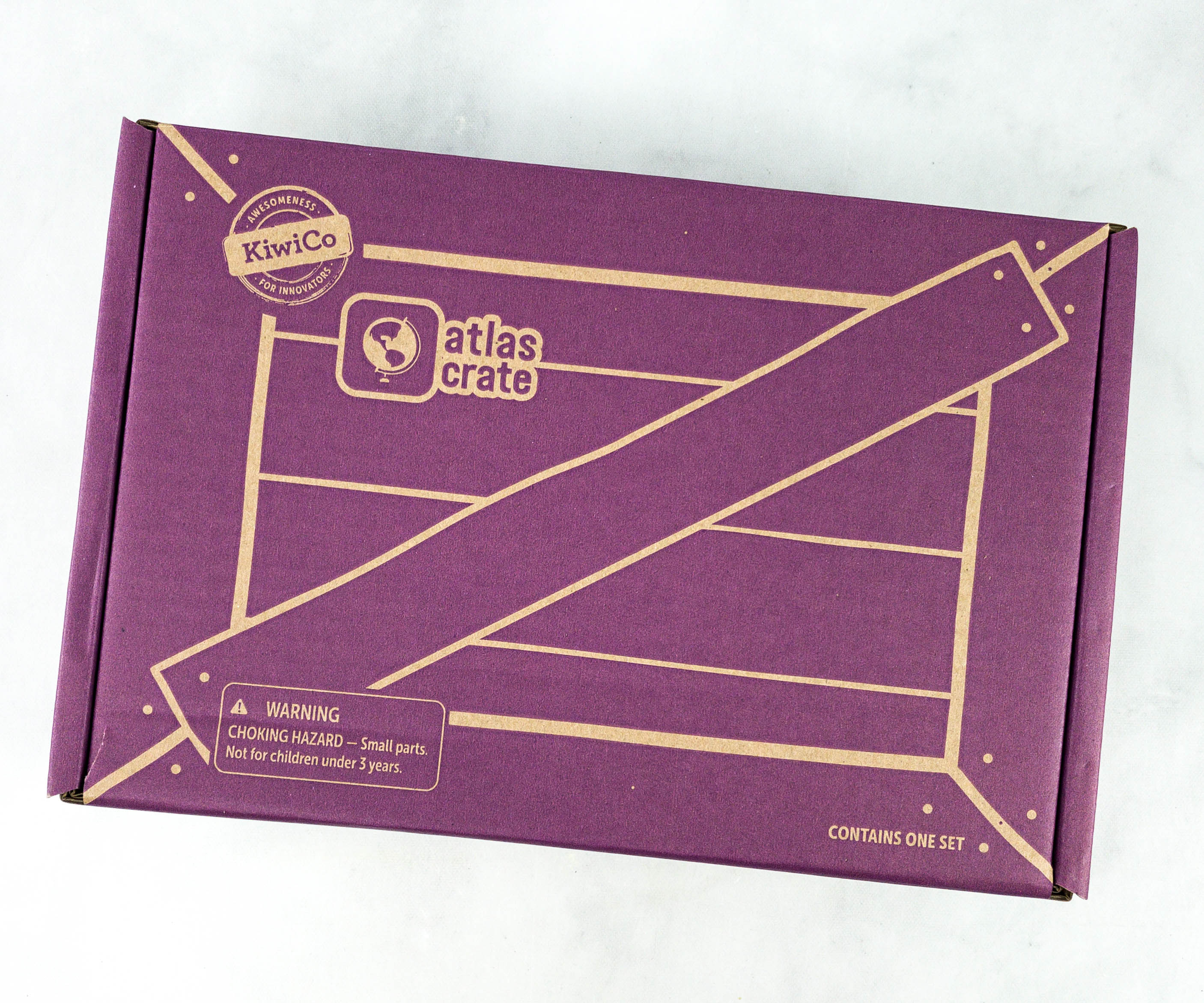
Atlas Crate is a monthly subscription from KiwiCo that specializes in geography and culture for children between ages 6 to 11 years old. This box is designed to spark kids’ sense of adventure and curiosity, inspiring them to see themselves as citizens of the world. Kids can see and connect with the rest of the world, helping them grow beyond their own experience as they explore the globe.
KiwiCo also offers Kiwi Crate, Koala Crate, Doodle Crate, Tinker Crate, Panda Crate, Maker Crate, and Eureka Crate. Atlas Crate is a great addition to the KiwiCo family as geography and exploration is always a favorite activity!
DEAL: Save 30% on your first month with this link on any KiwiCo line, no coupon code required!
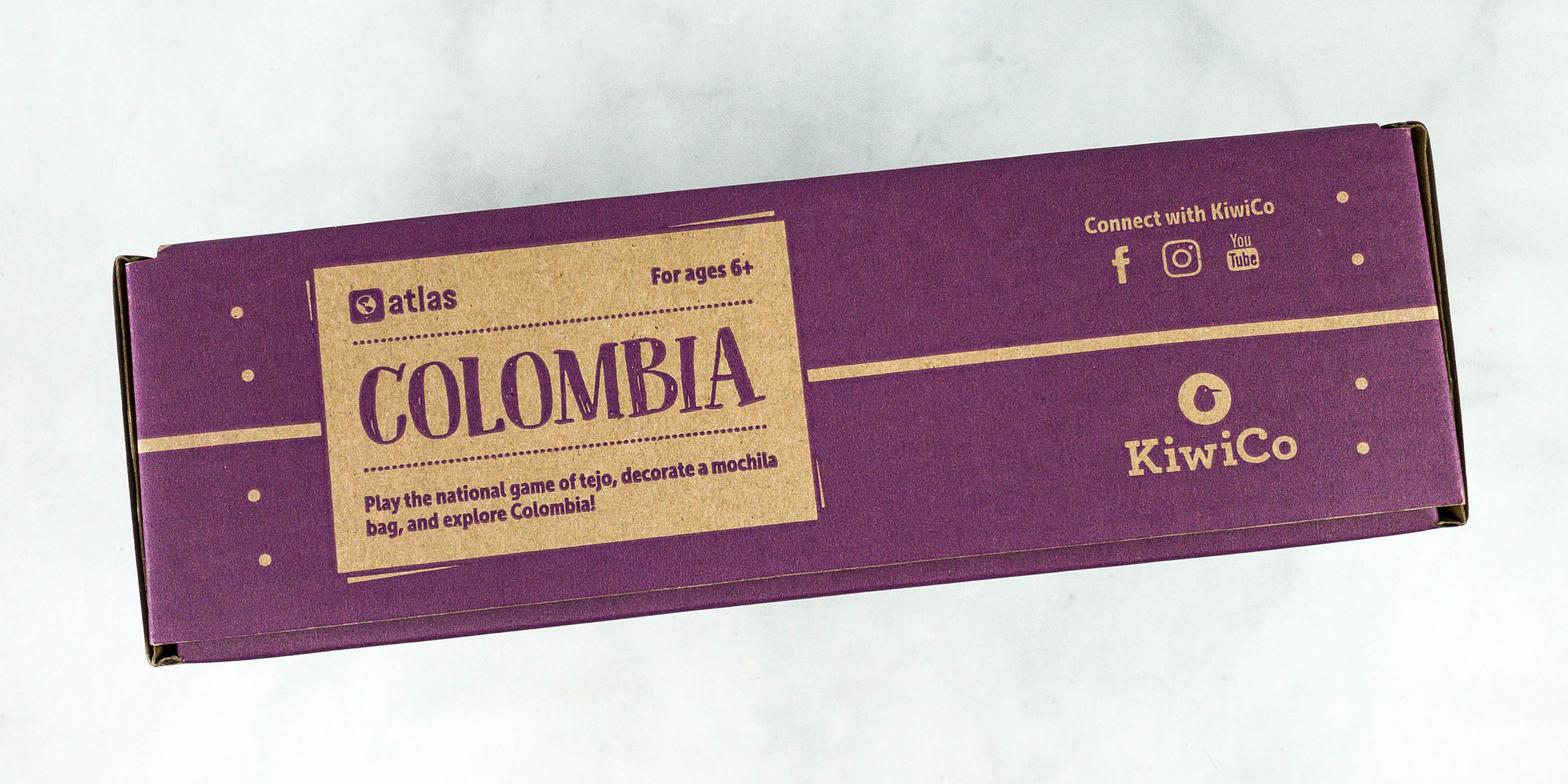
This month’s box is all about COLOMBIA!
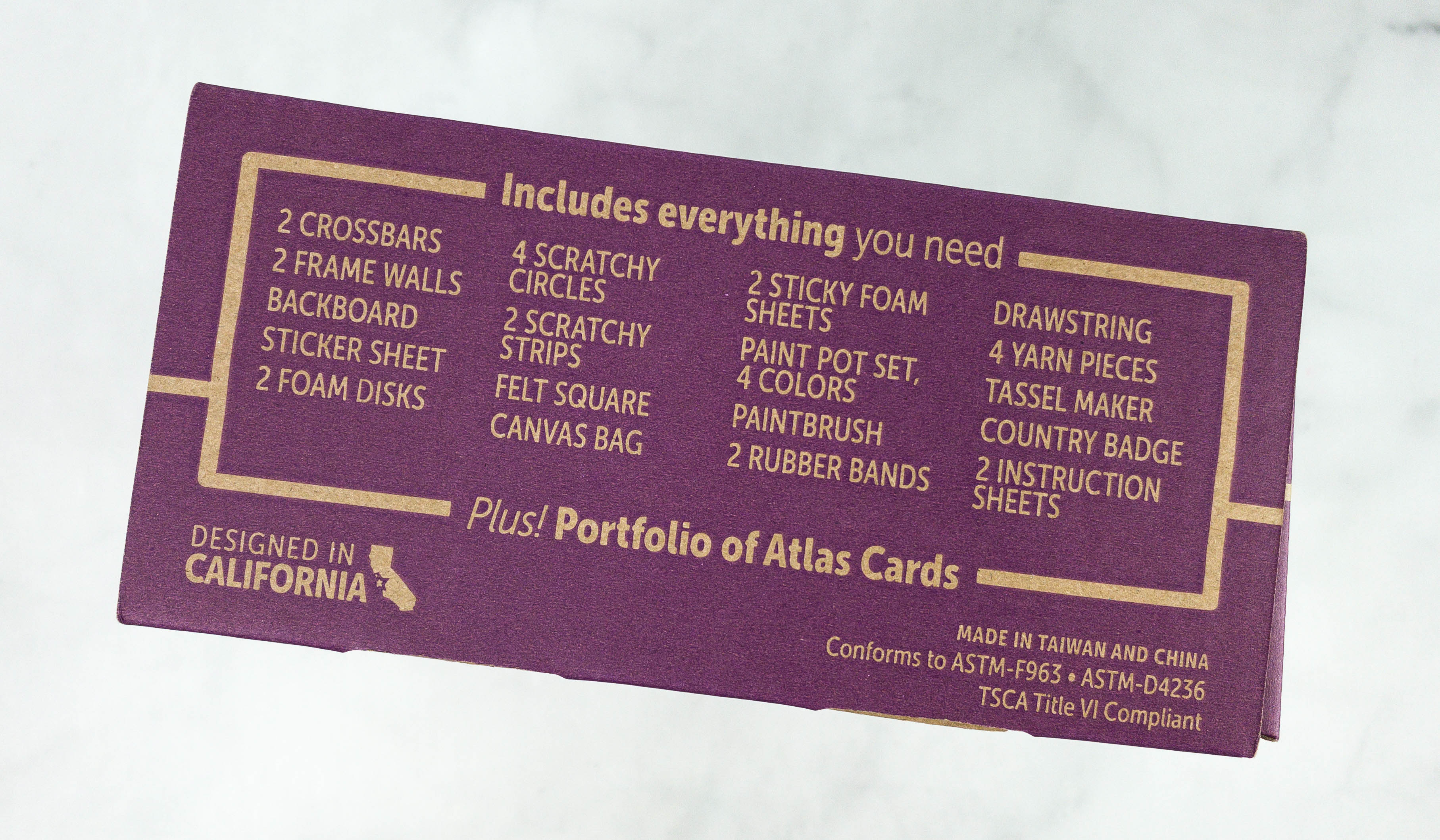
This side of the box features a list of all the materials inside.

The items were neatly stacked inside.
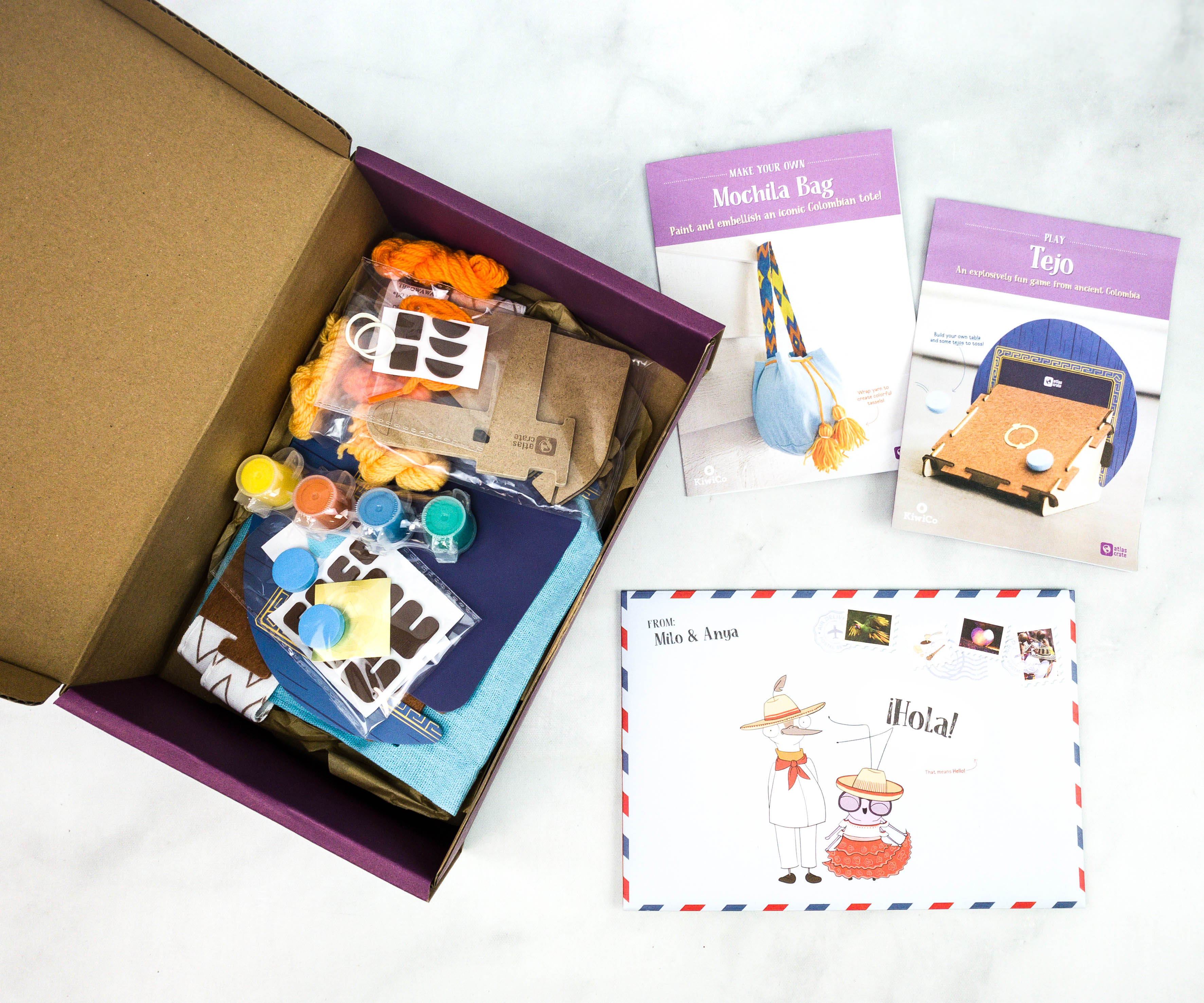
Upon opening, we are welcomed by the cards and pamphlets that are essential to the activities. This subscription emphasizes learning through creative play as they provide in this box everything the kids might need. It builds a sense of adventure, an appreciation of other cultures, builds a sense of global citizenship and opportunity for parents and grandparents to bond with children.
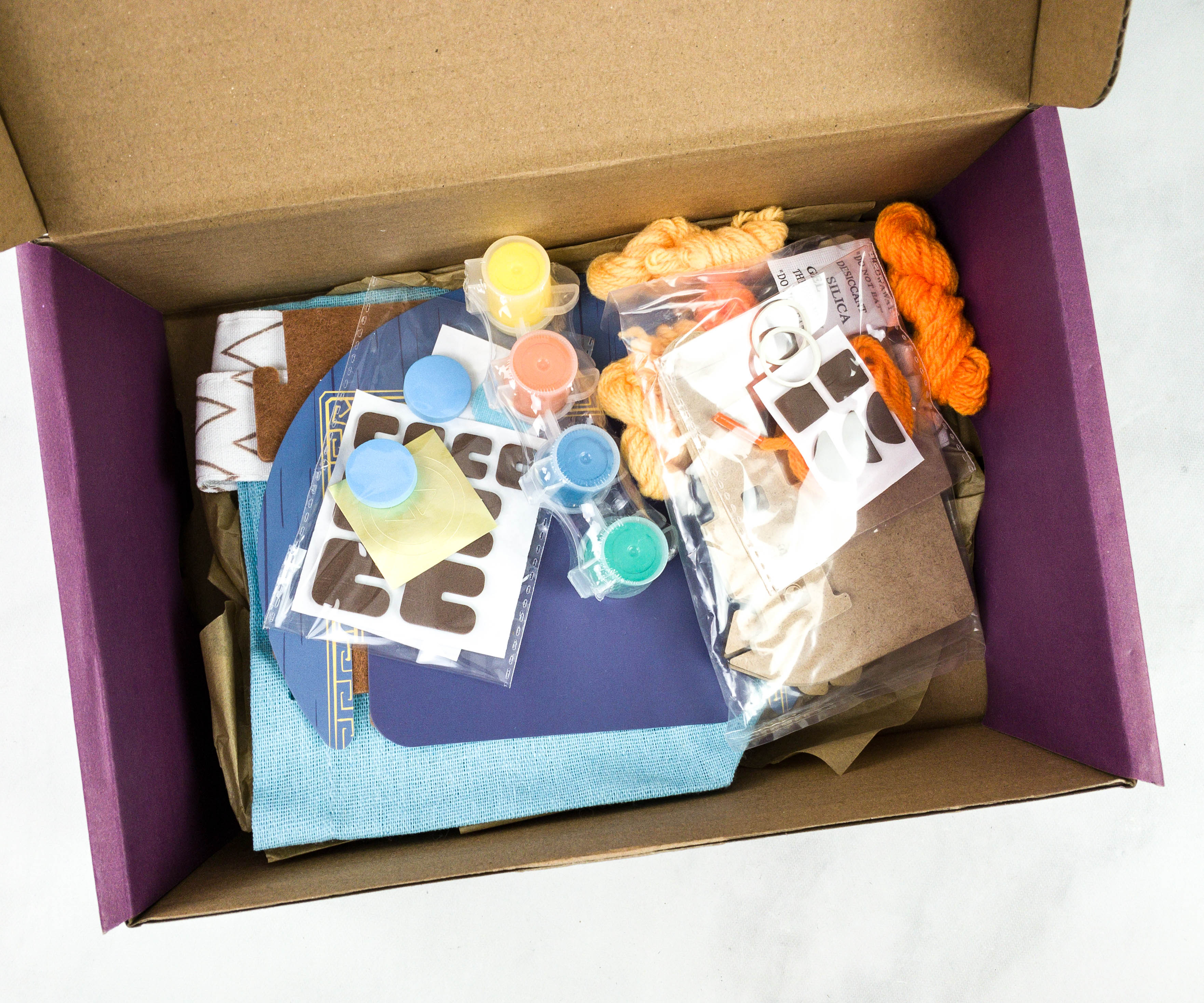
Small items are packed in a sealed plastic container to make sure that they don’t get lost and arrive in good form!
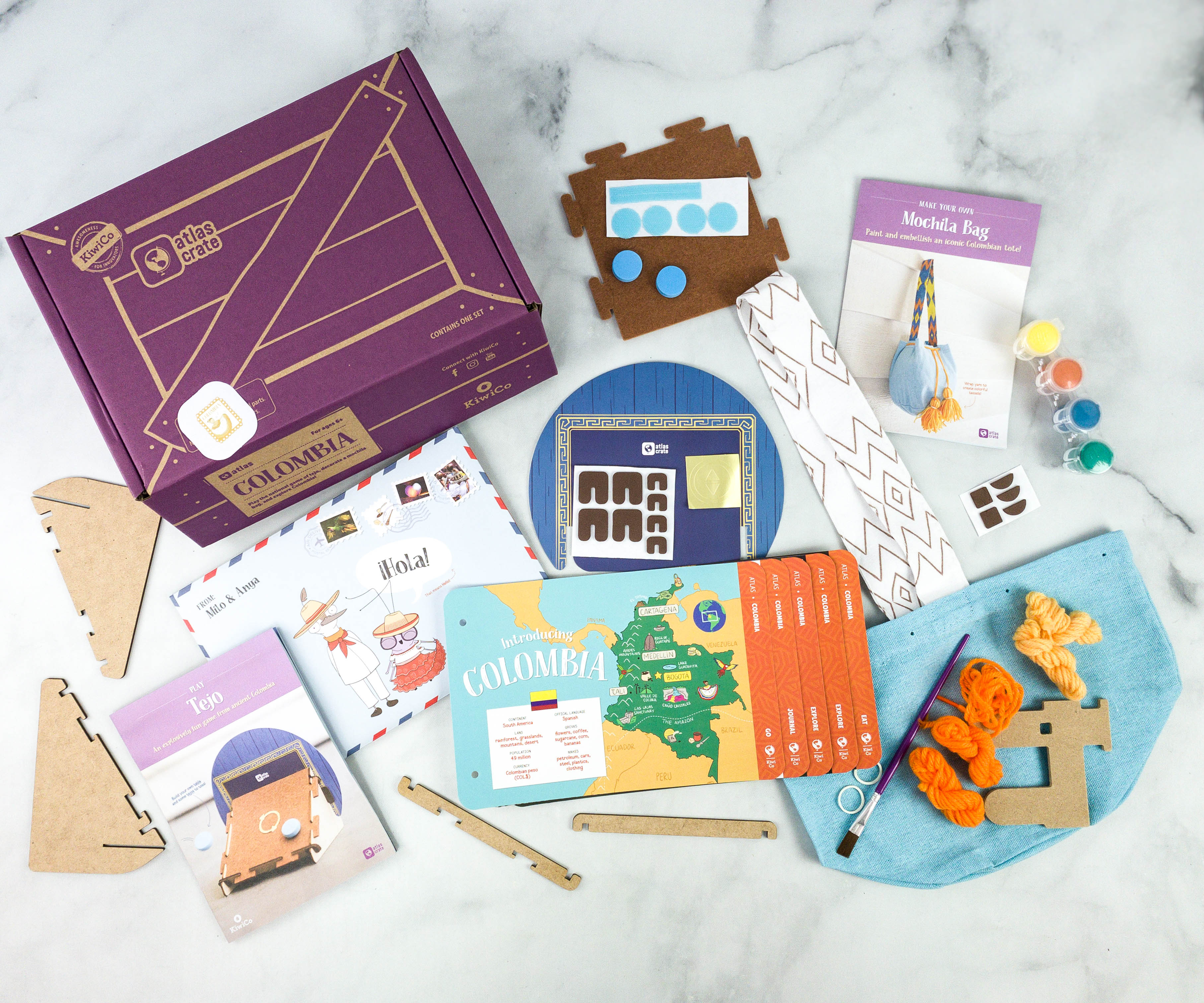
Everything in the crate!
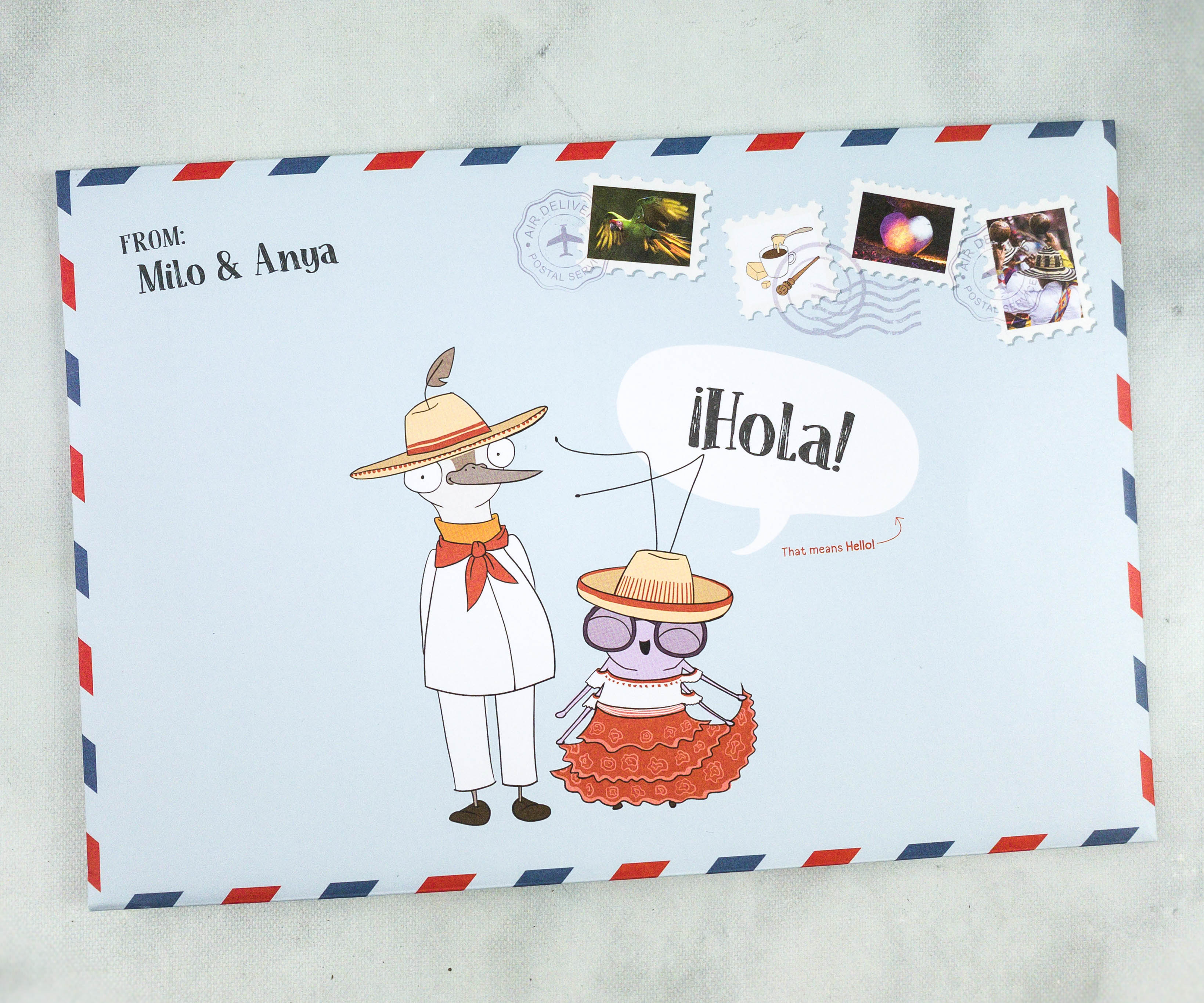
“iHola!” means “Hello!” in Colombia.

The letter opens up to show us an introduction to Colombia.
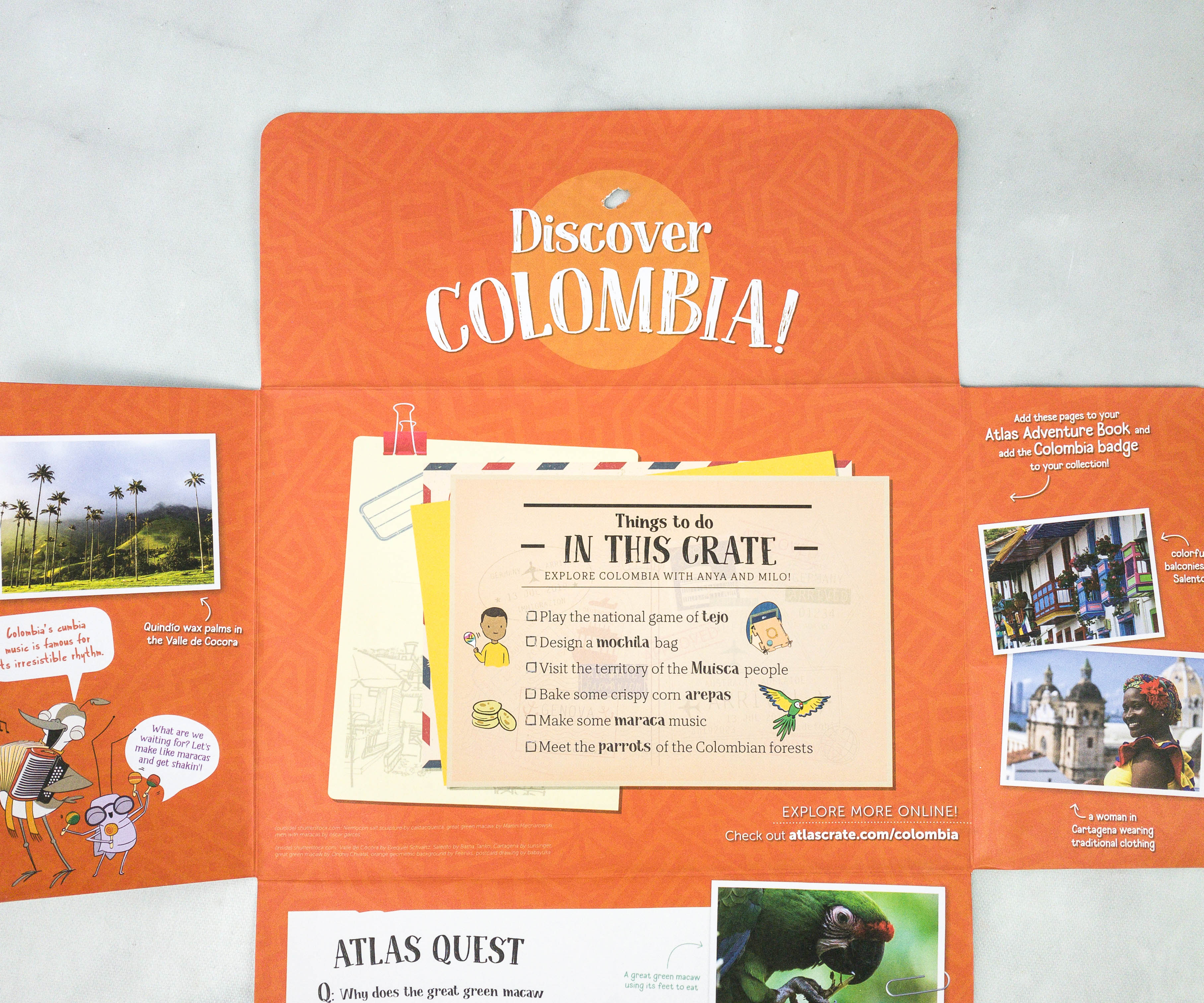
There were also trivia cards filled with fascinating facts and photos.
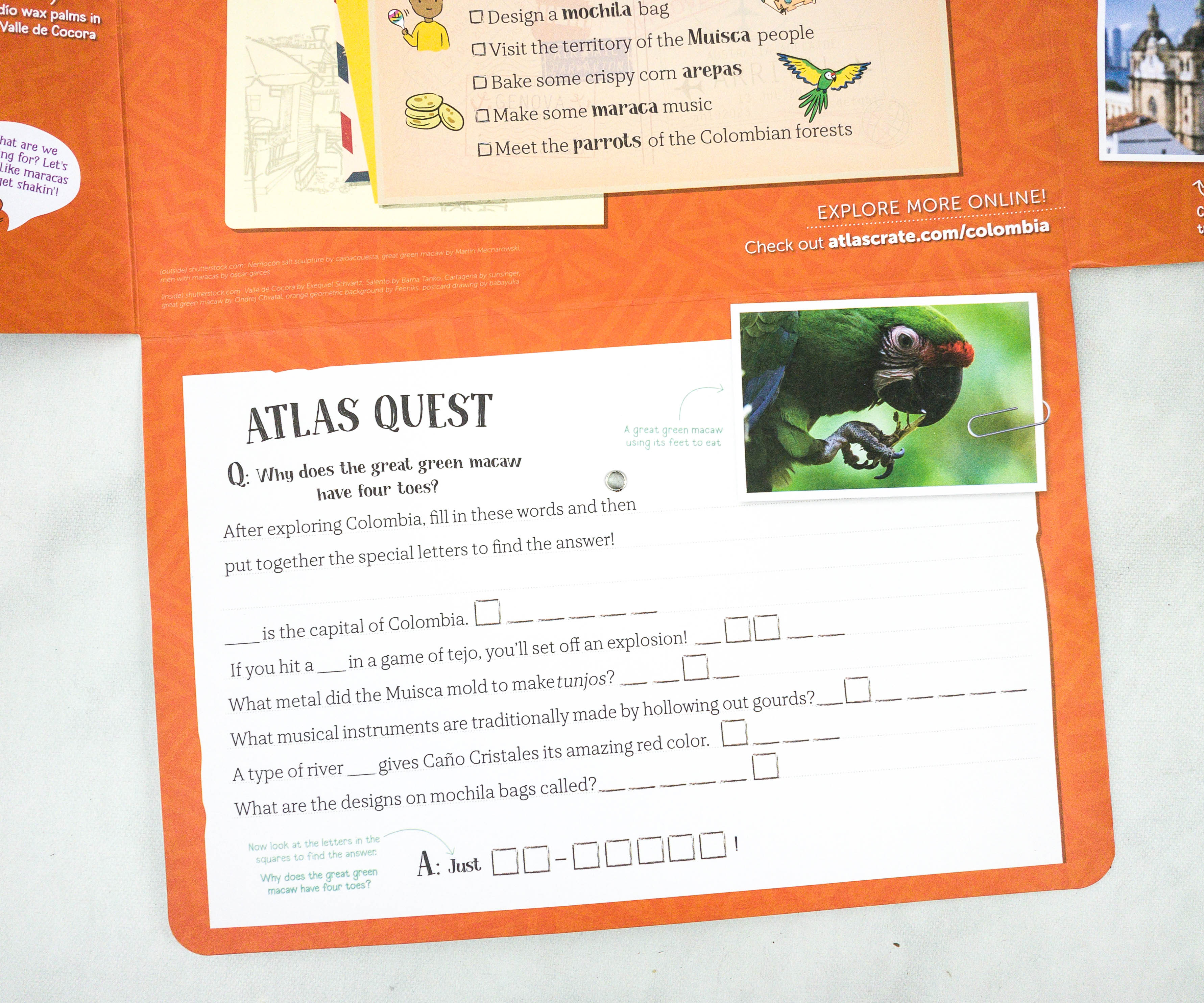
One of the flaps has Atlas Quest, which you’ll need to fill out after exploring the country!
You can explore more online after you get your box with additional activities and book suggestions! Atlas Crate recommends Waiting for the Biblioburro and My Name is Gabito / Me Llamo Gabito: The Life of Gabriel Garcia Marquez.
Atlas Crate Adventure Book
Missed our first review? You’ll get the rings in your first box, which will always start with the WORLD crate. Check out that review here!
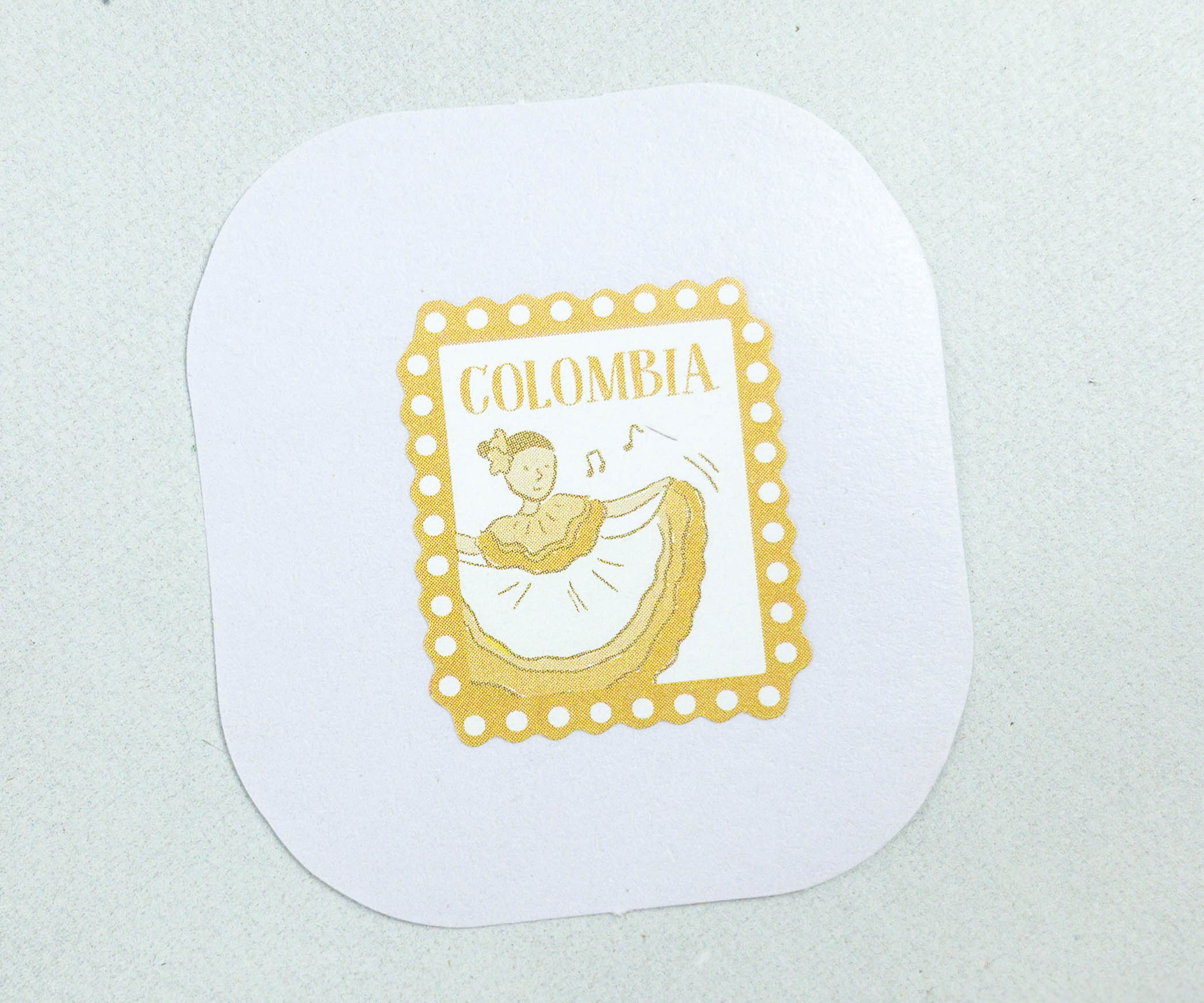
Each month, the kids receive a sticker that represents the featured country. This month’s sticker features Colombia’s famous folk dance, Cumbia!

My kids placed the newest sticker on the Adventure Book, along with the other countries that we have already explored!
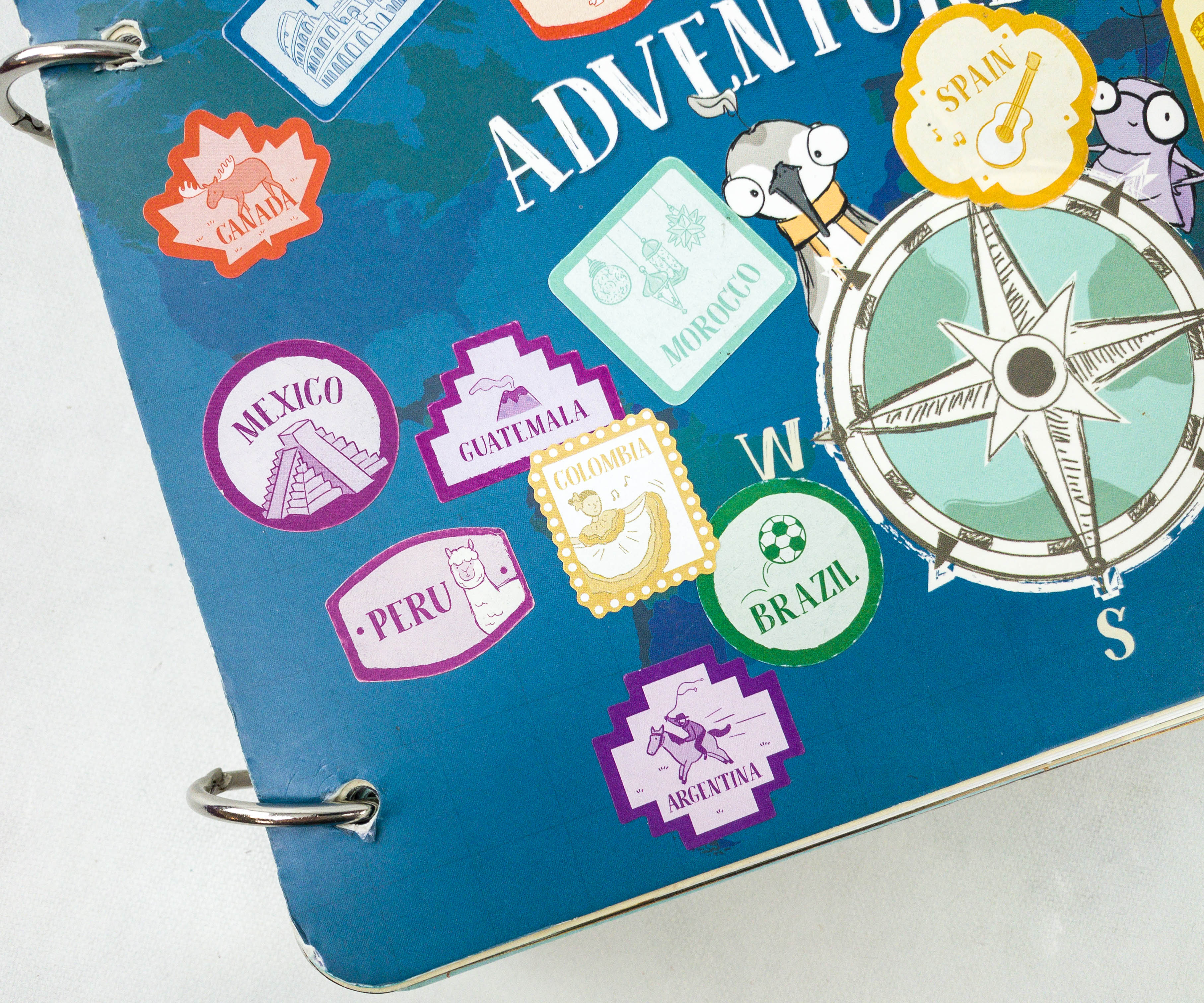
There you go! My kids have explored so many places already!
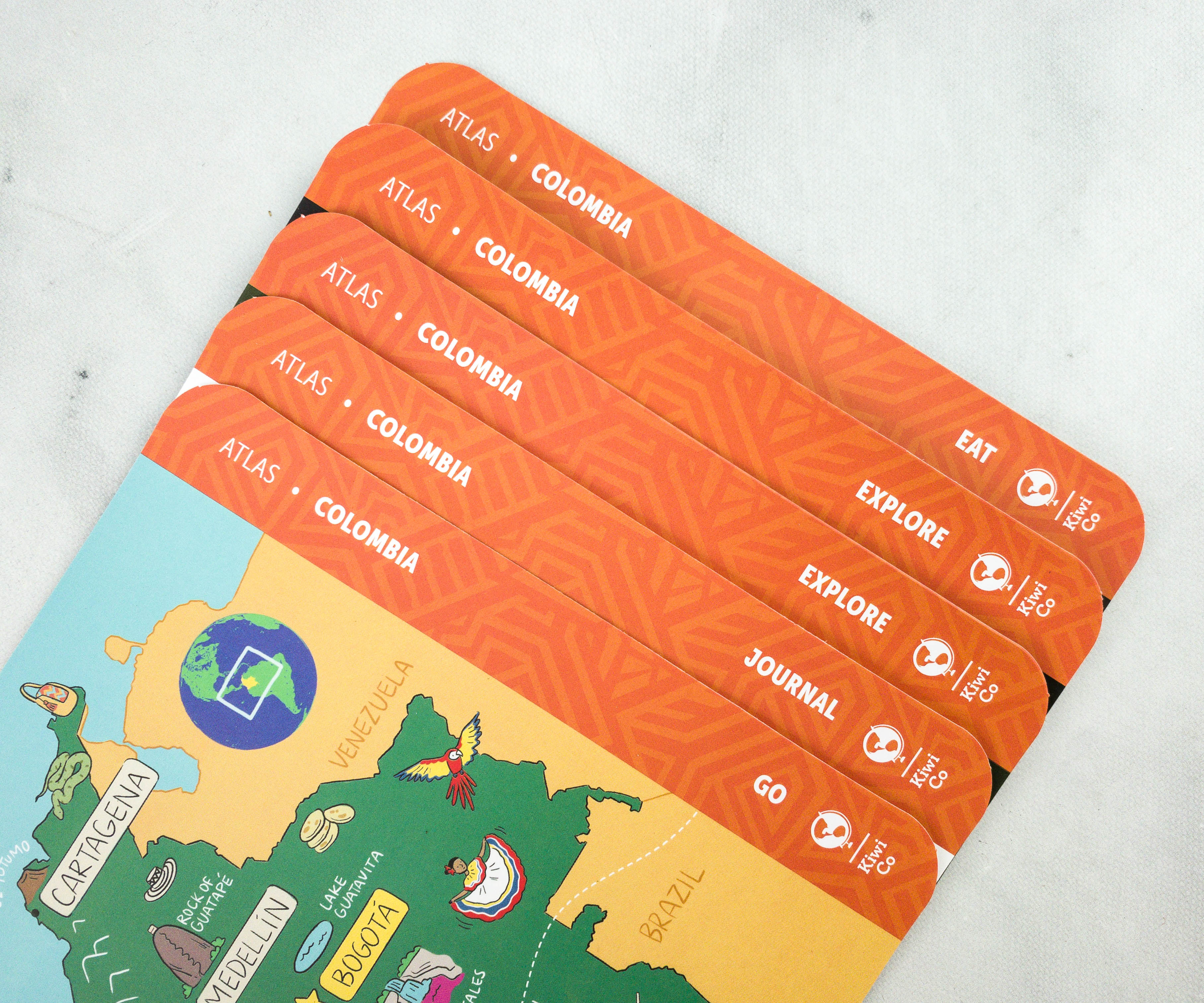
The table of contents is on the edge of the page for easy reading, just like how a travel book works.
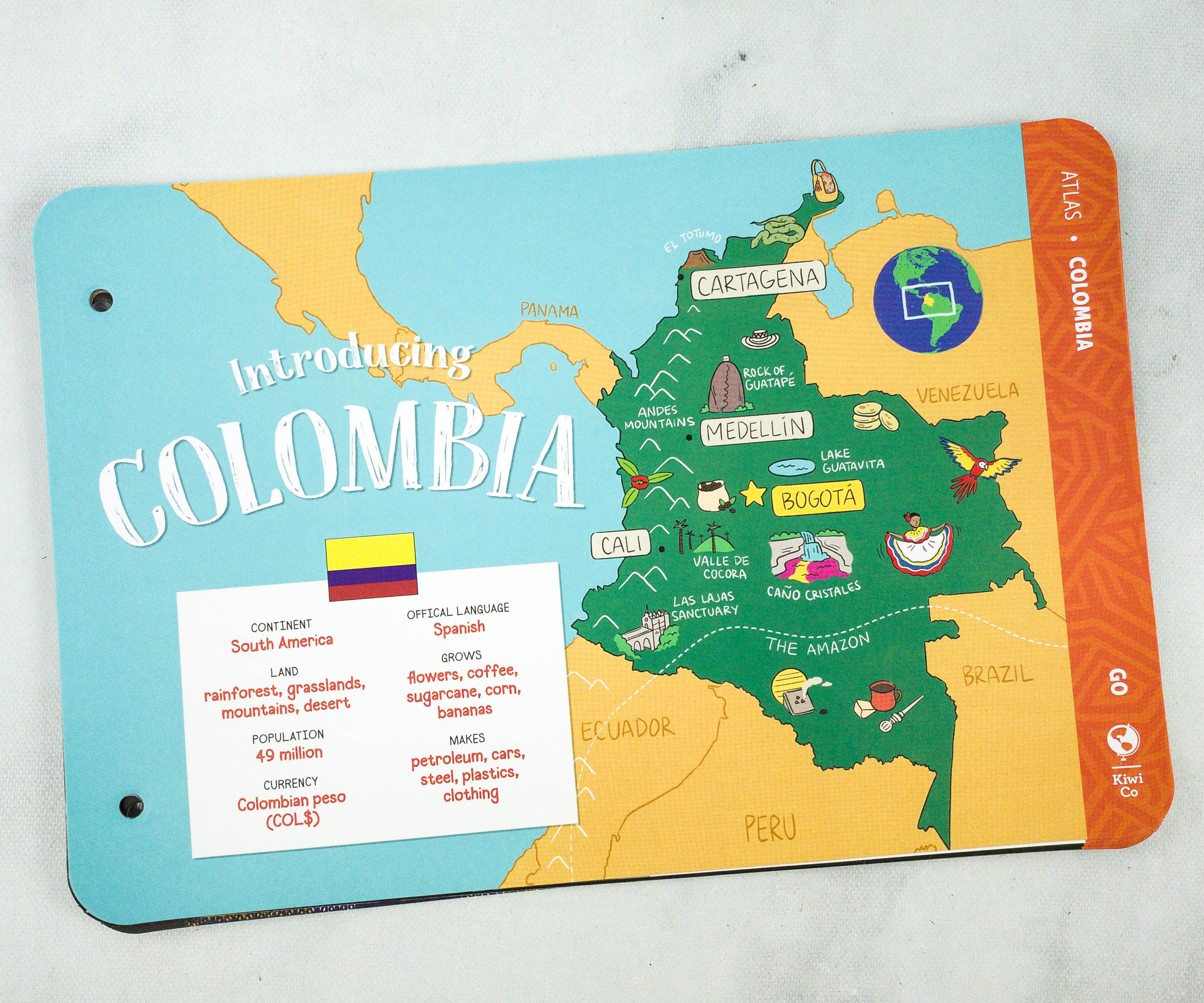
This booklet also comes with a cute illustration of the country’s map with some fun facts and drawings of Colombia’s notable events, sports, places, or products from that particular location.
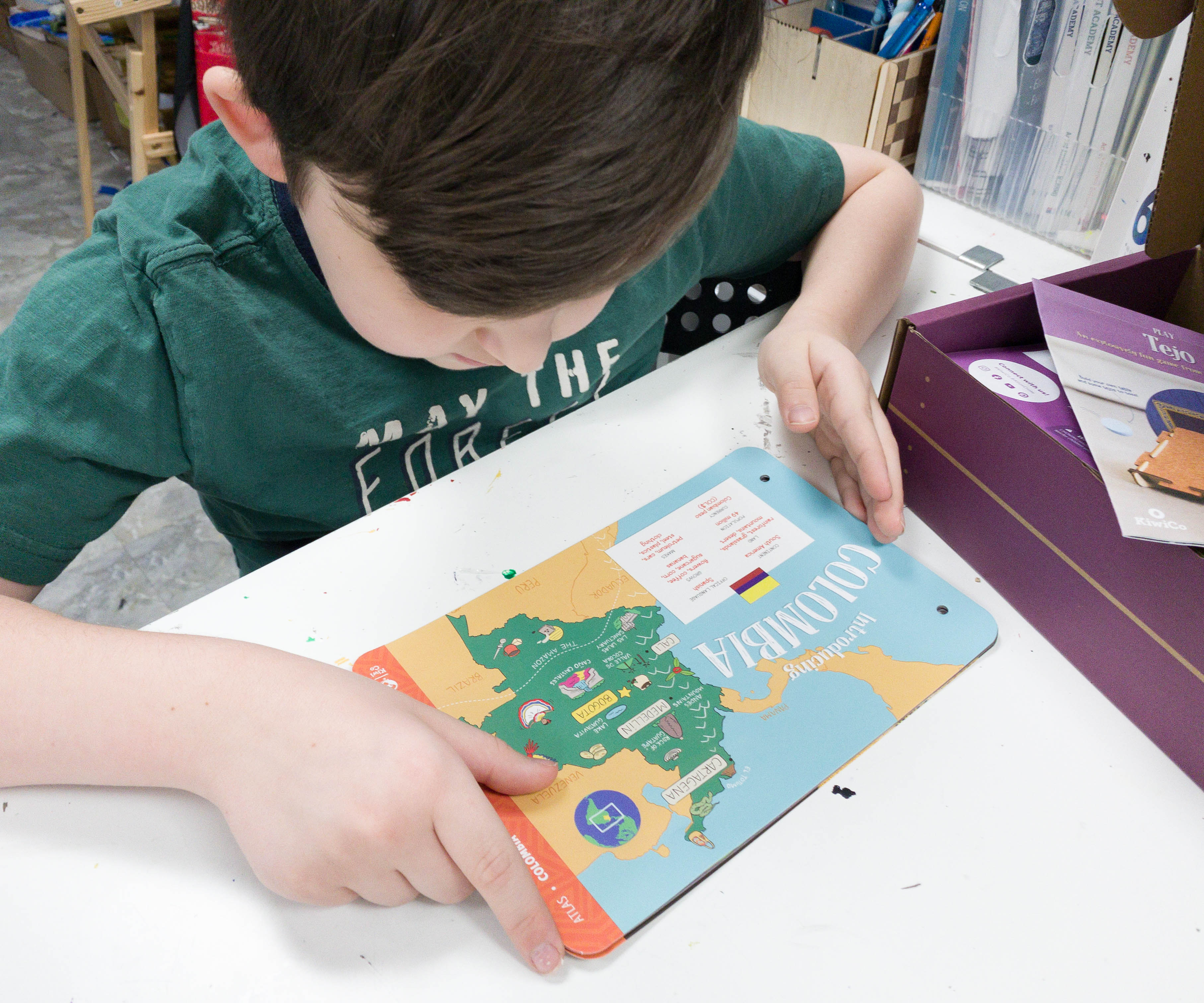
My son was excited to know everything about Colombia!
Atlas Crate Activities
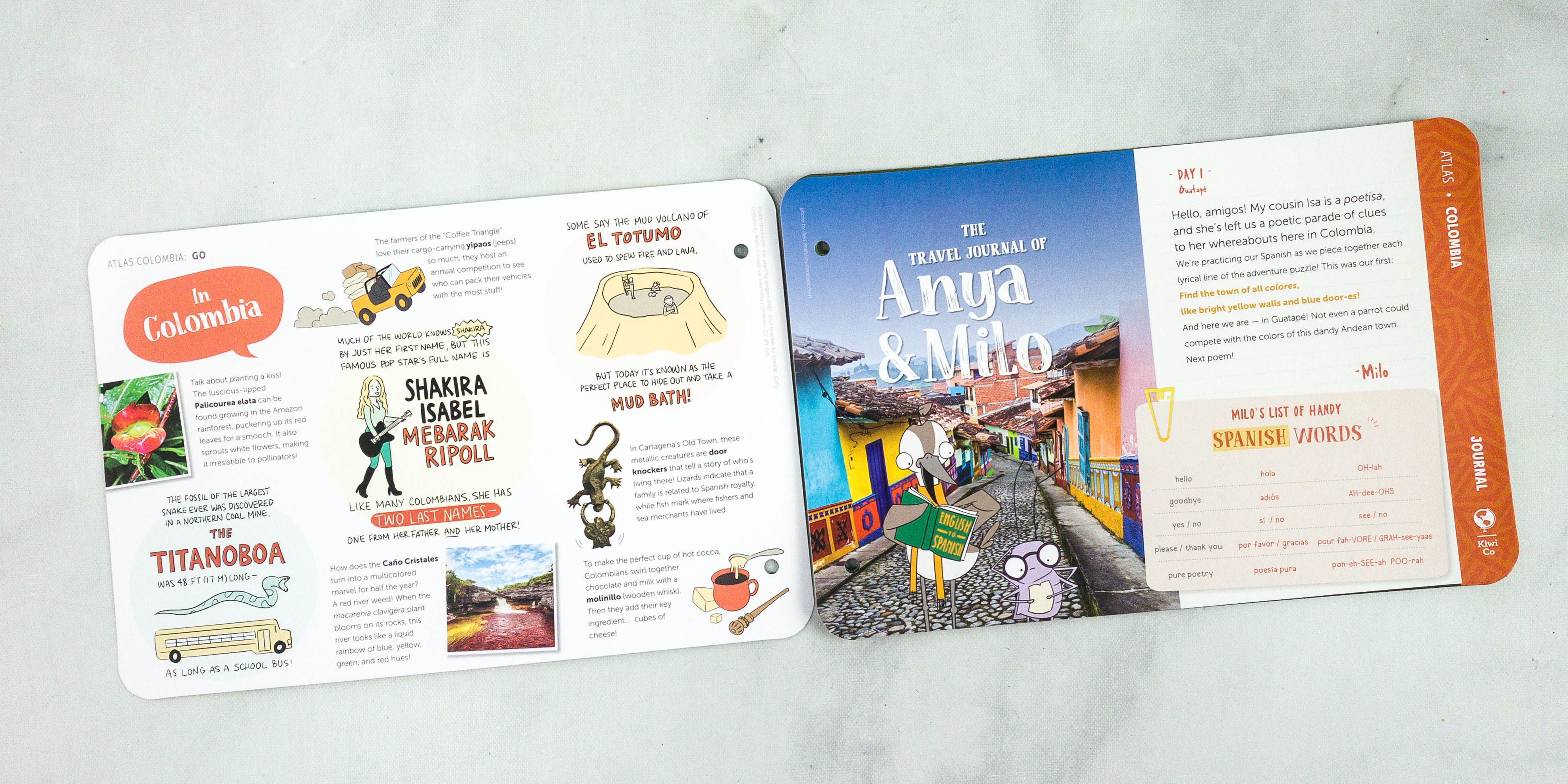
These pages feature the beginning of the adventures of Anya and Milo in Colombia.

One of their first stops is the town of all colors, Guatape. They also made a visit to Tequendama Falls Museum, Las Lajas Sanctuary, and the lost city of Colombia known as Ciudad Perdida. Featured also on the other side of the booklet is the great green macaw, the largest parrot in Colombia, as it reaches lengths up to 3 feet!
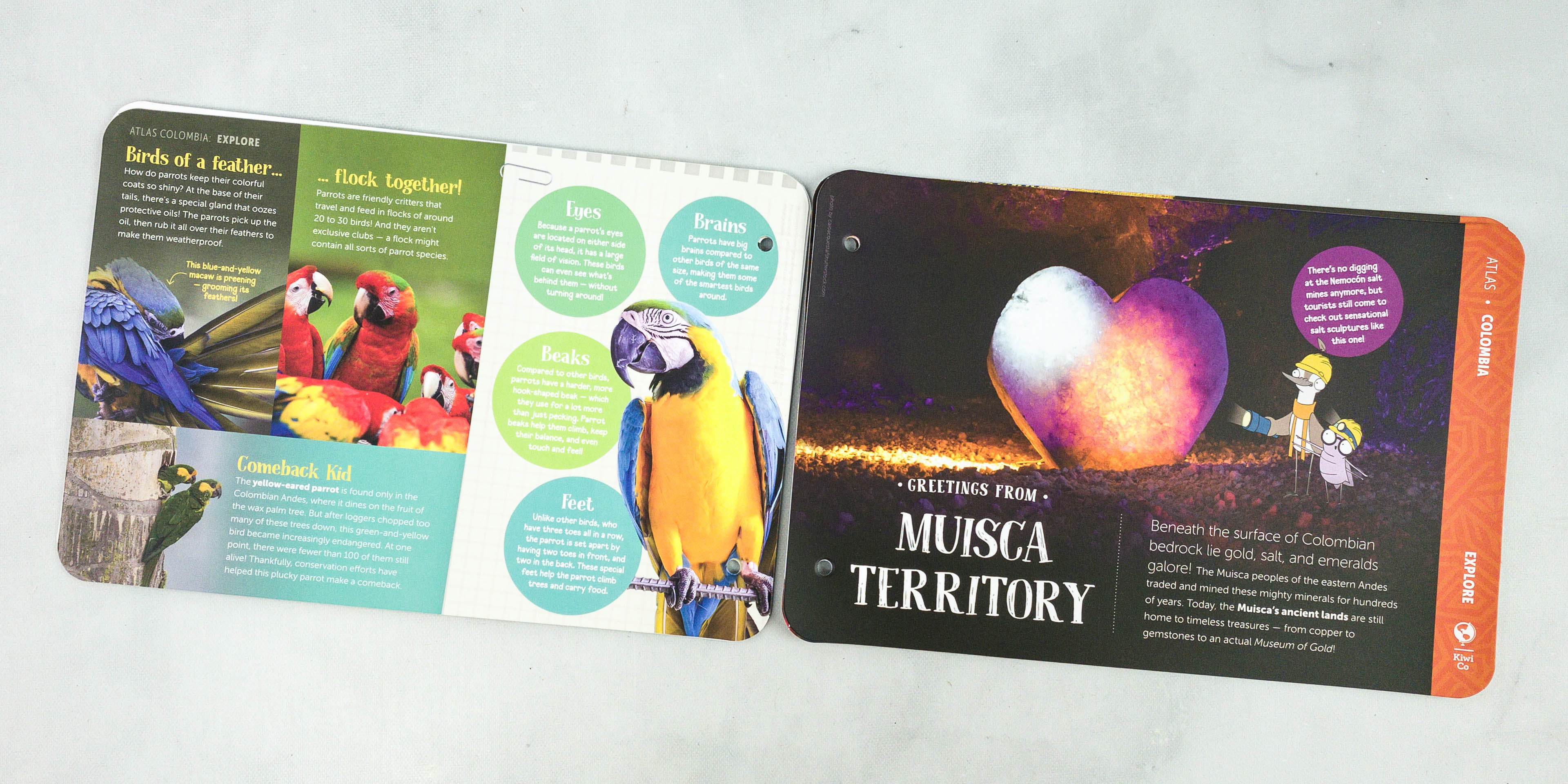
This part of the booklet features some essential information about parrots. According to the booklet, parrots have a special gland located at the root base of their tails that oozes protective oils, keeping their feather shiny and weatherproof. There’s even an article that features the sensational salt sculpture from Nemocon salt mines.
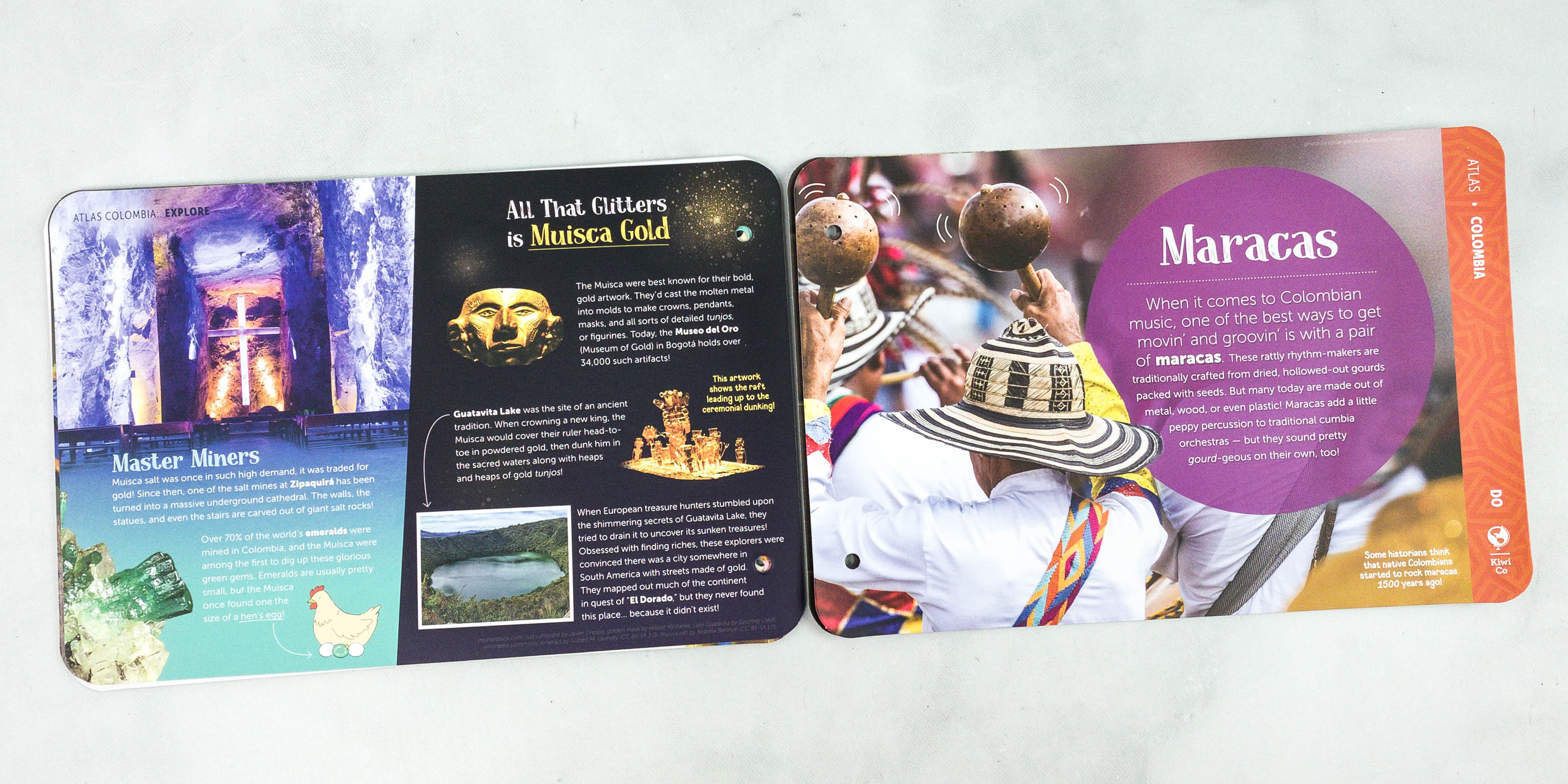
They also introduced a ratty rhythm-maker, the Maracas! This musical instrument is traditionally crafted from dried, hollowed-out gourds packed with seeds. But, as of today, their are also maracas made from metal, wood, or even plastic!
Atlas Crate Recipe
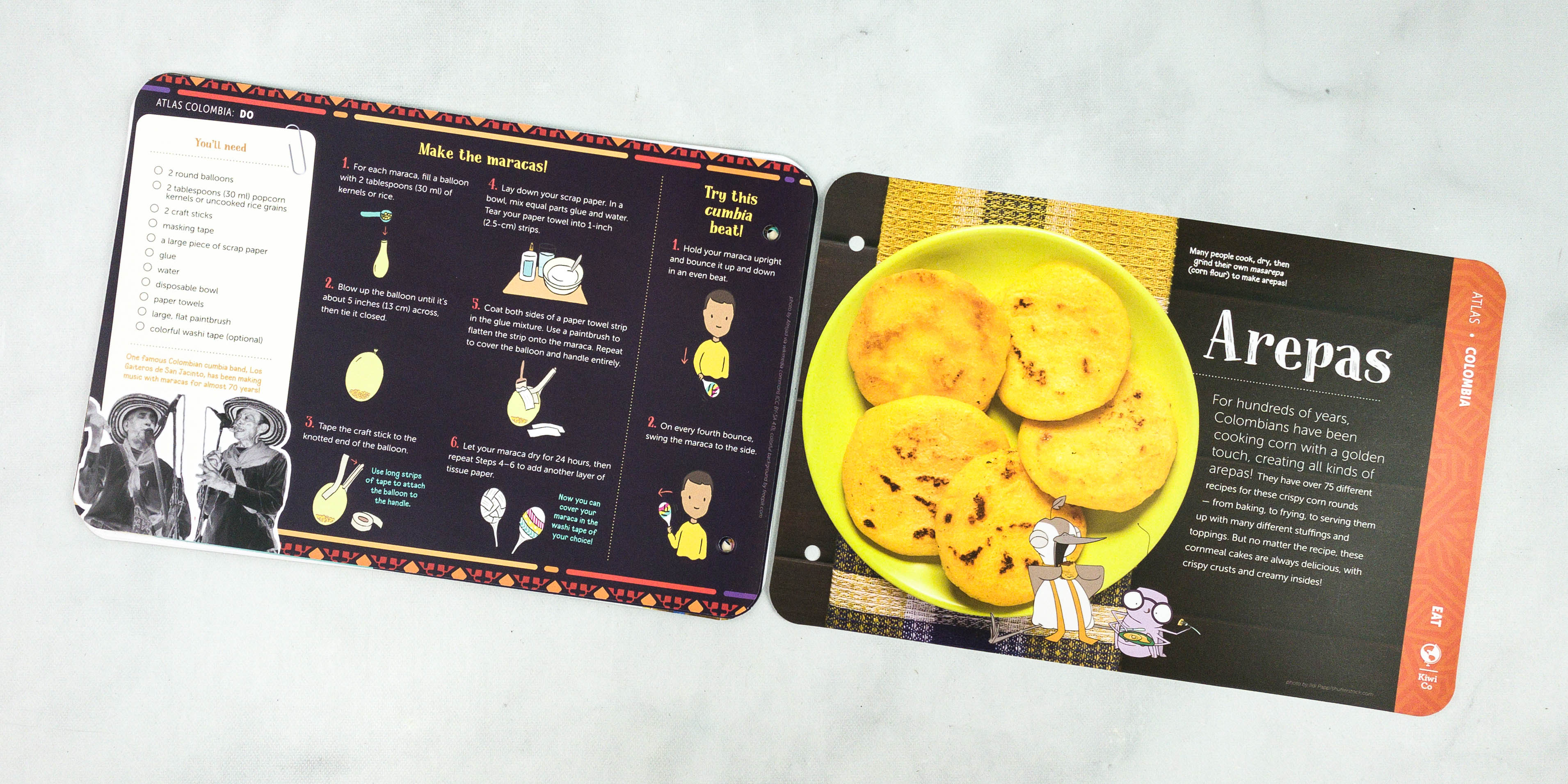
This month’s featured recipe is one of the most popular food in Colombia, Arepas. It’s a delicious food with over 75 different recipes that varies from baking, to frying, to serving them up with many different stuffing and toppings.
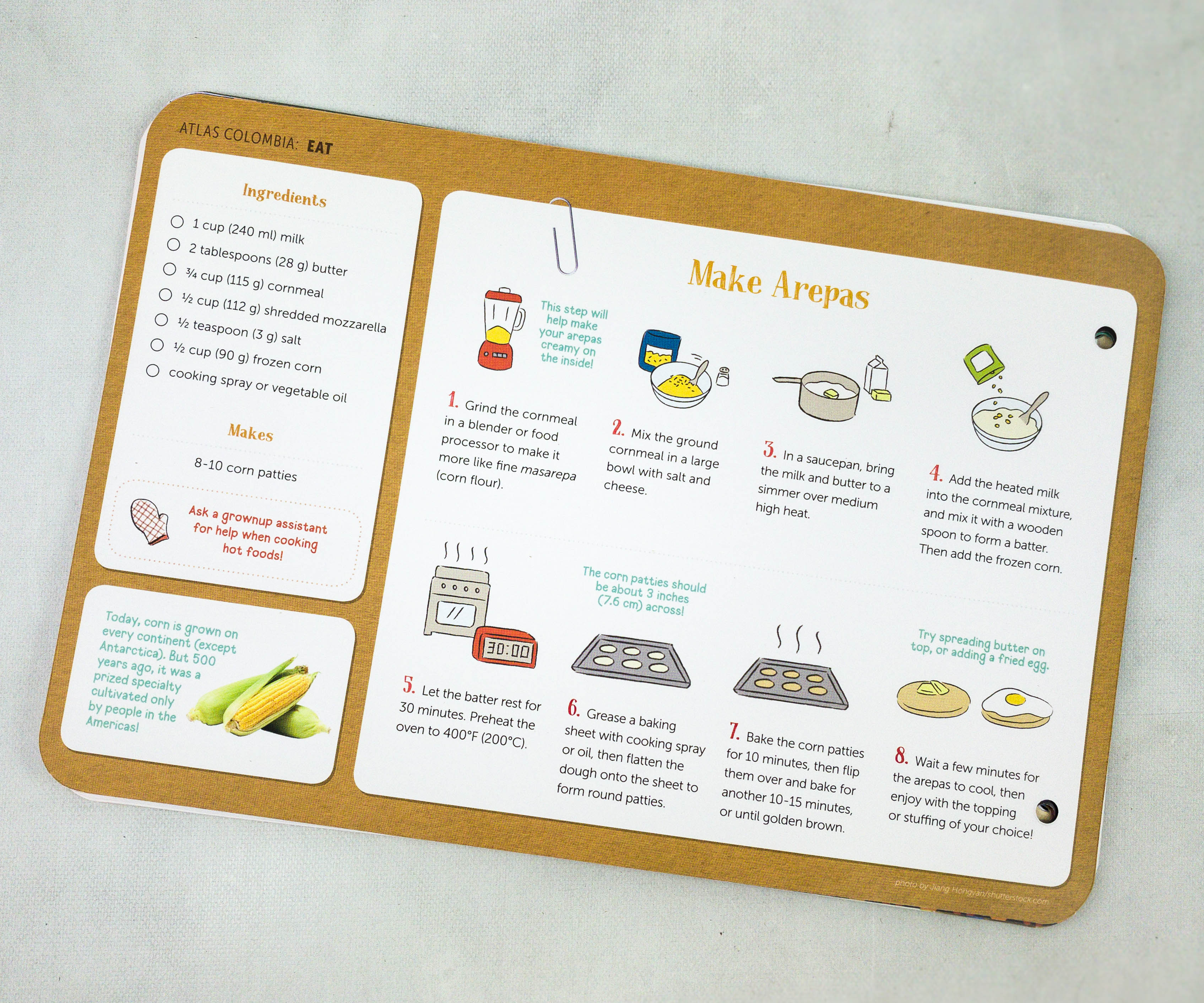
This part of the booklet features everything you need to know in making Arepas. It includes the ingredients and a detailed step-by-step procedure.
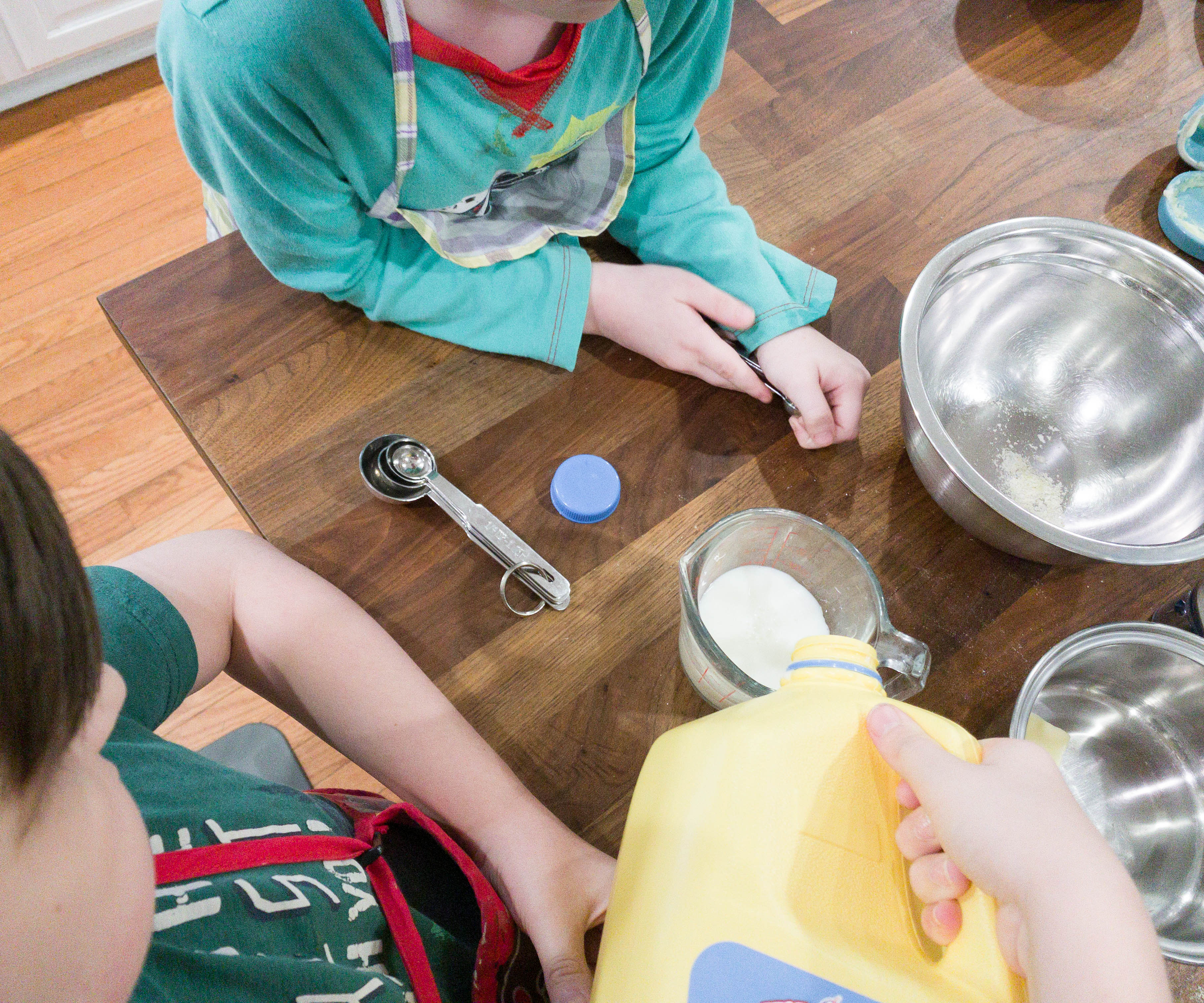
The first step is to grind the cornmeal in a blender to make it look like a fine masarepa or corn flour.
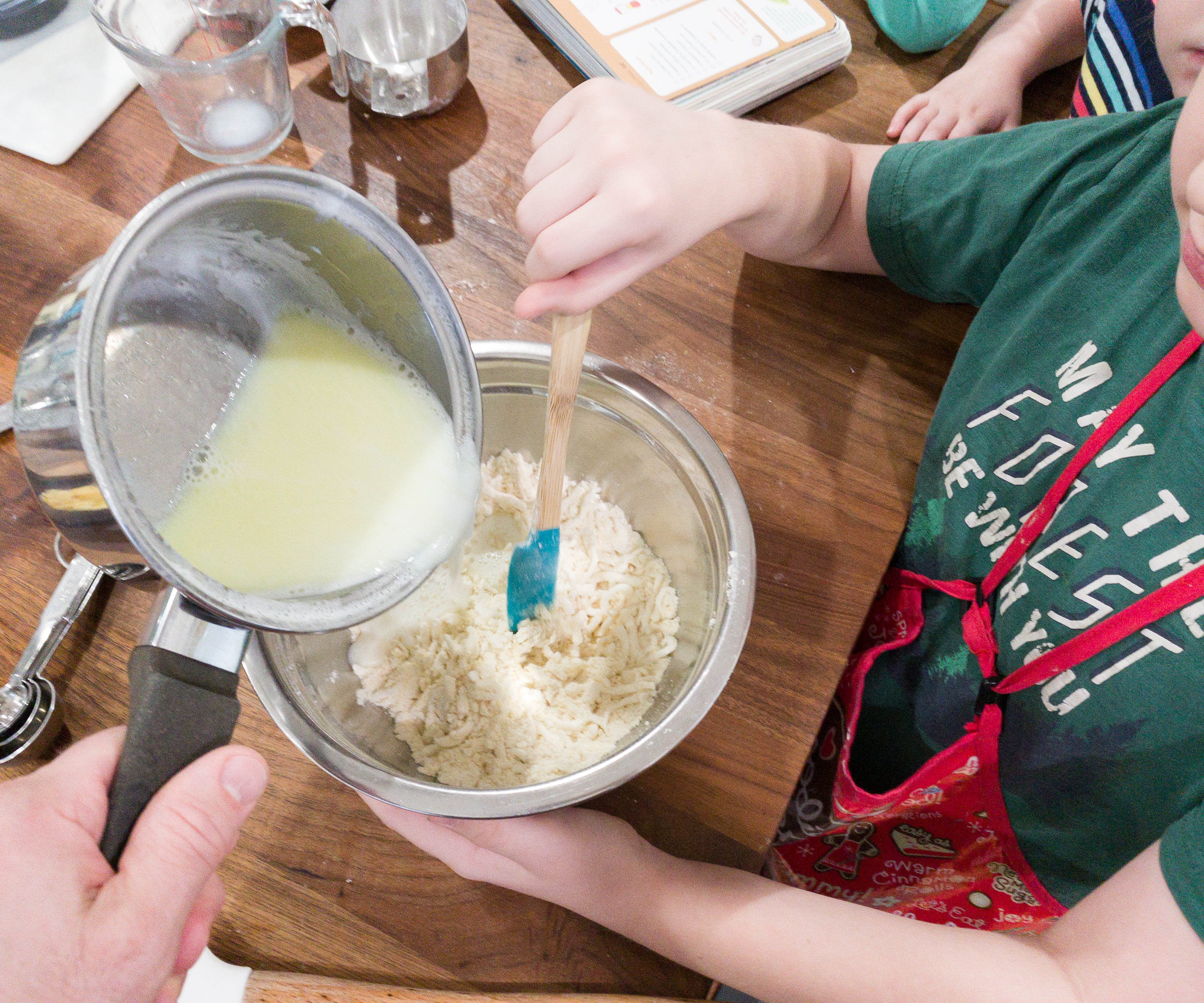
Then, mix the ground cornmeal in a large bowl with salt and cheese.
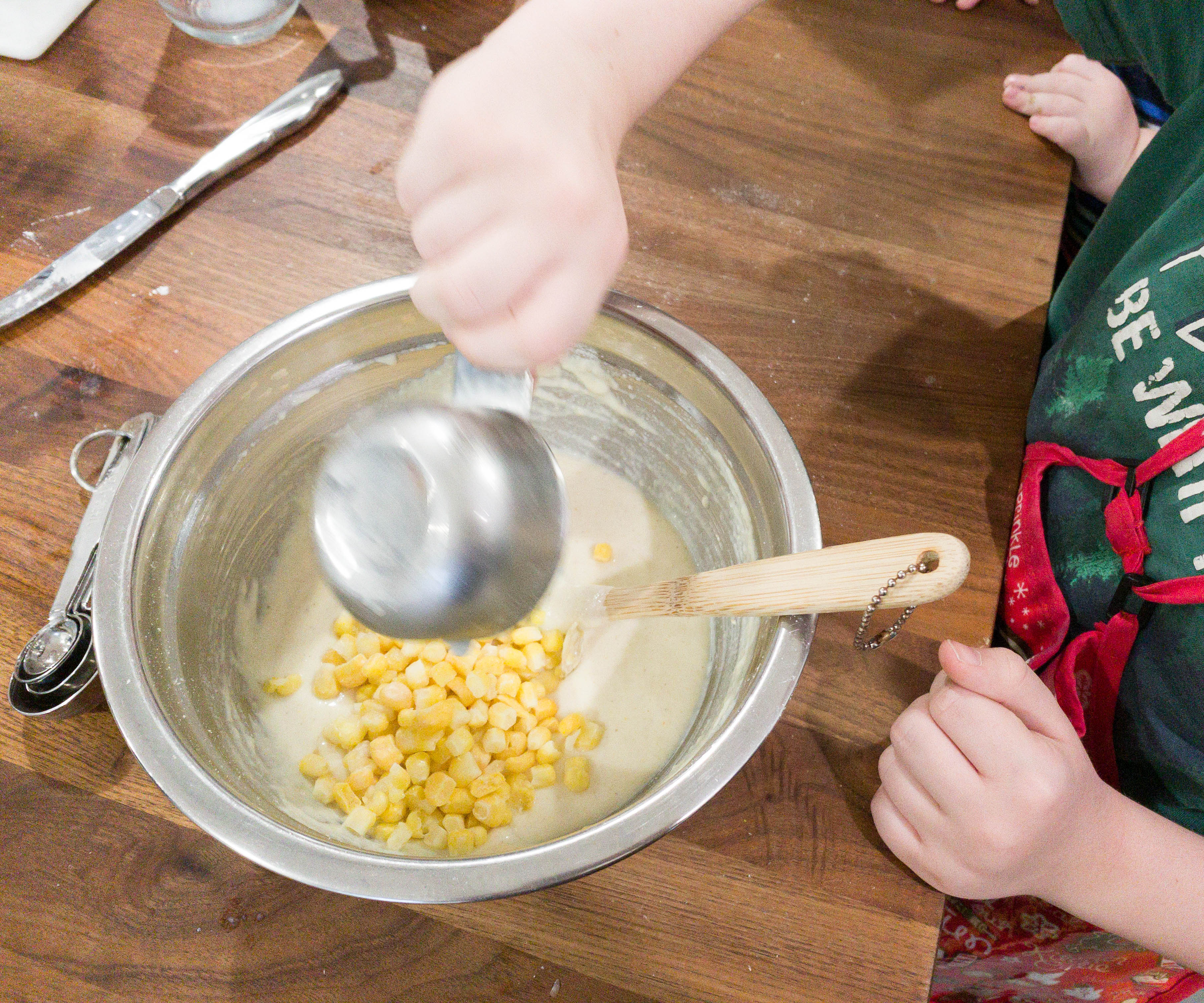
My son also added the heated milk into the cornmeal mixture and add the frozen corn.
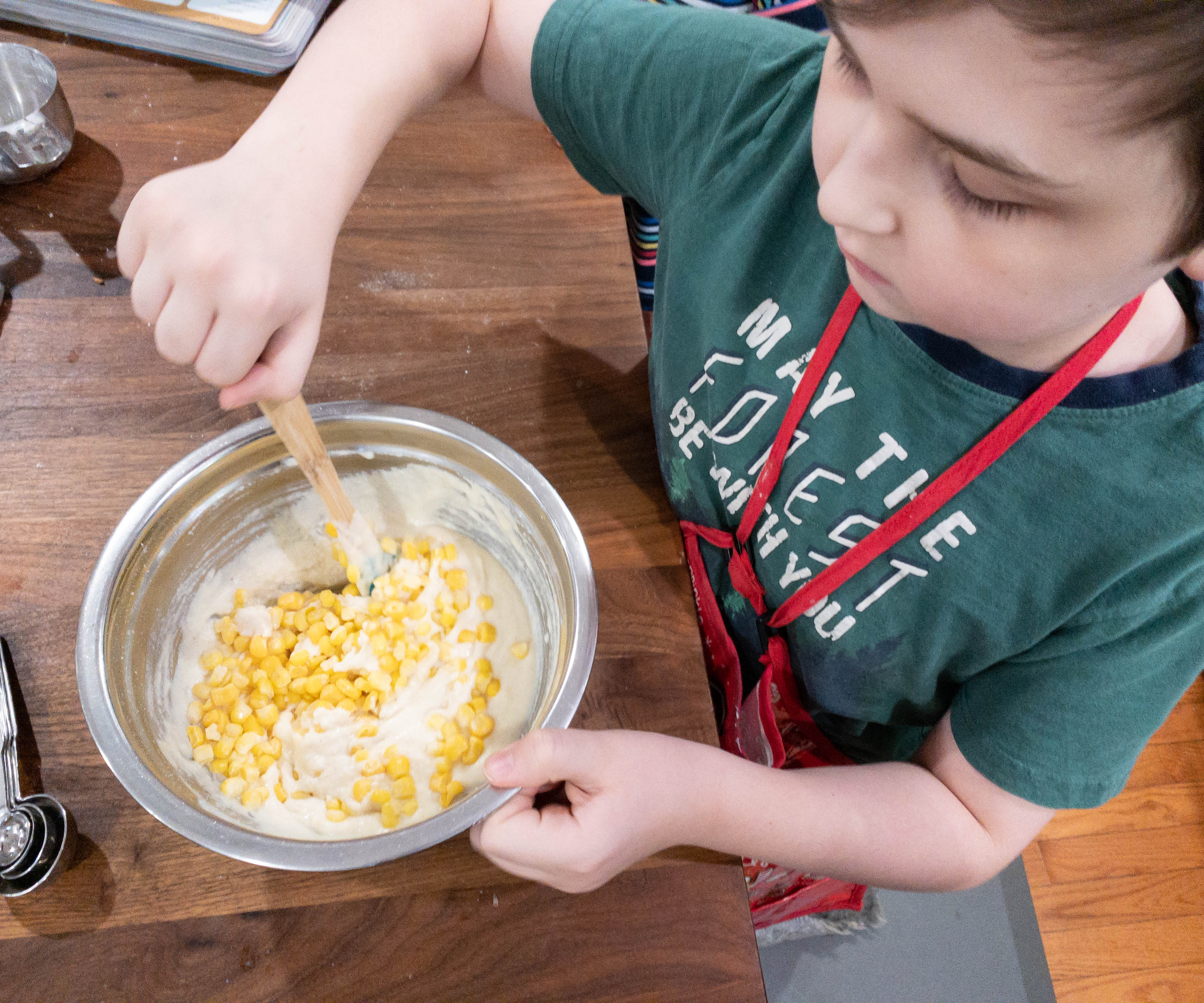
Next, he mixed the blend using a wooden spoon to form a thick and creamy batter and let it rest for 30 minutes.
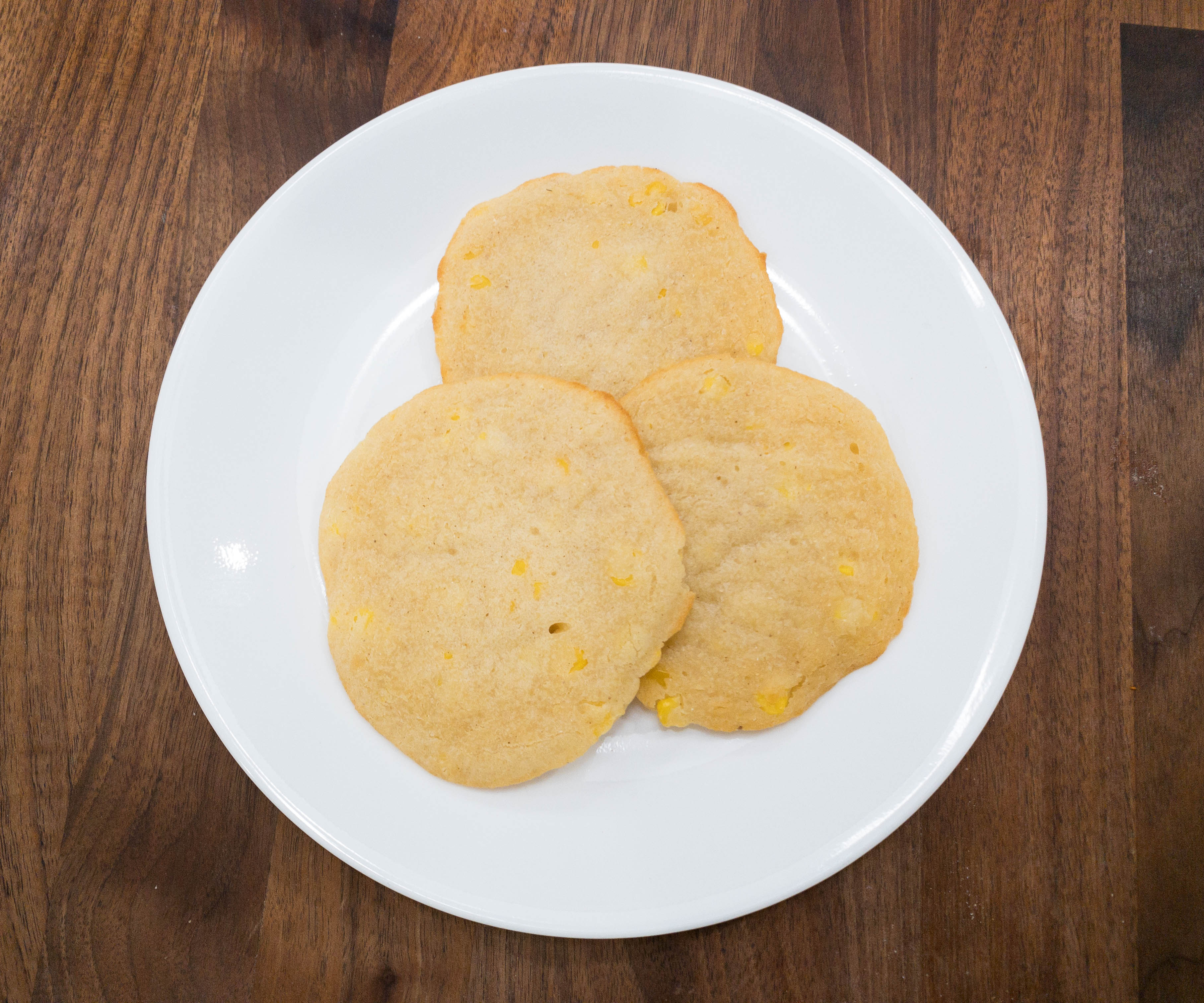
Before baking, simply flatten the dough onto the sheet to form round patties. Bake them for 10 minutes, flip over, and bake for another 10-15 minutes or until it turn golden brown.
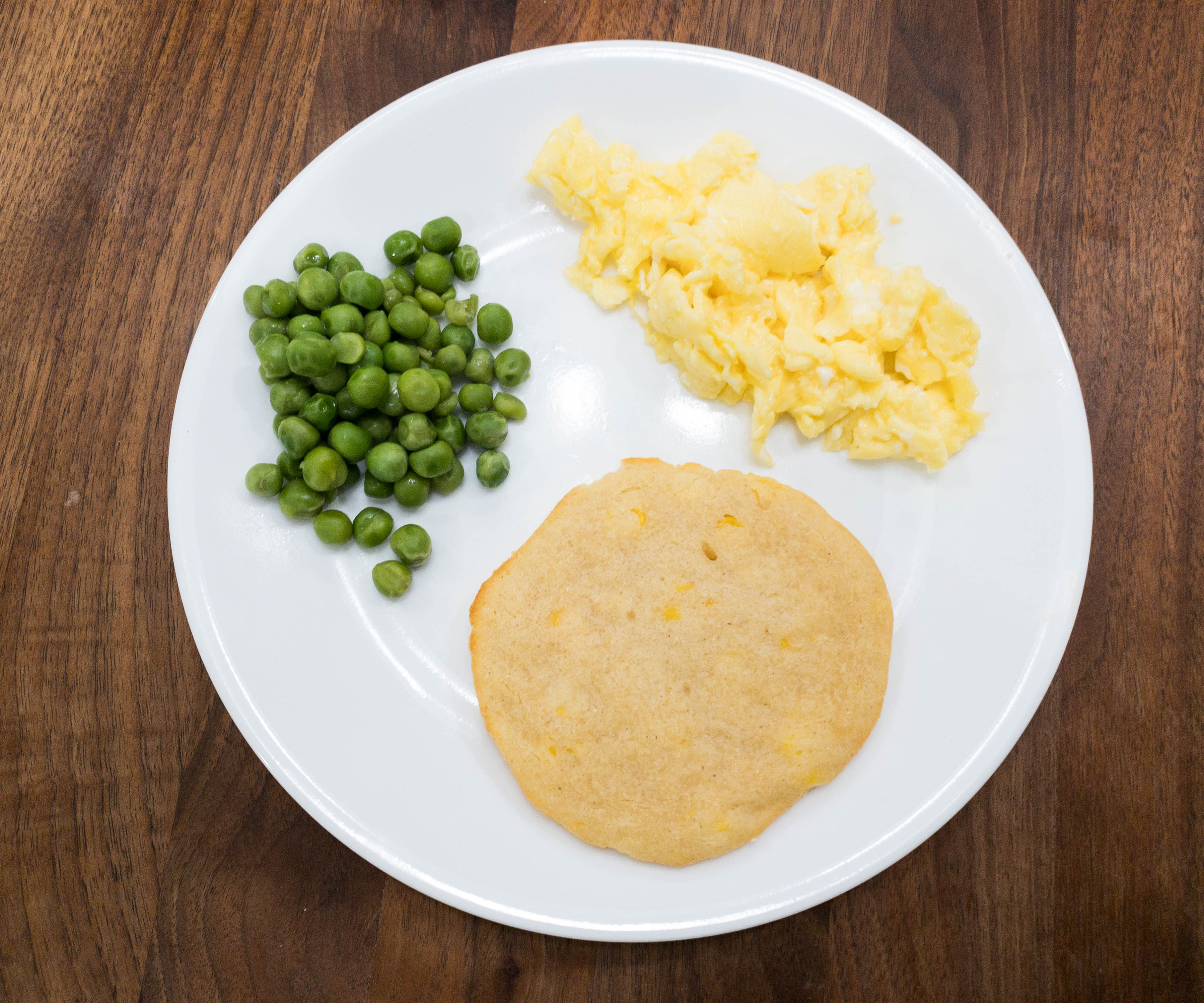
Wait for a few more minutes for the arepas to cool, add the toppings of your choice, and enjoy!
Atlas Crate Projects
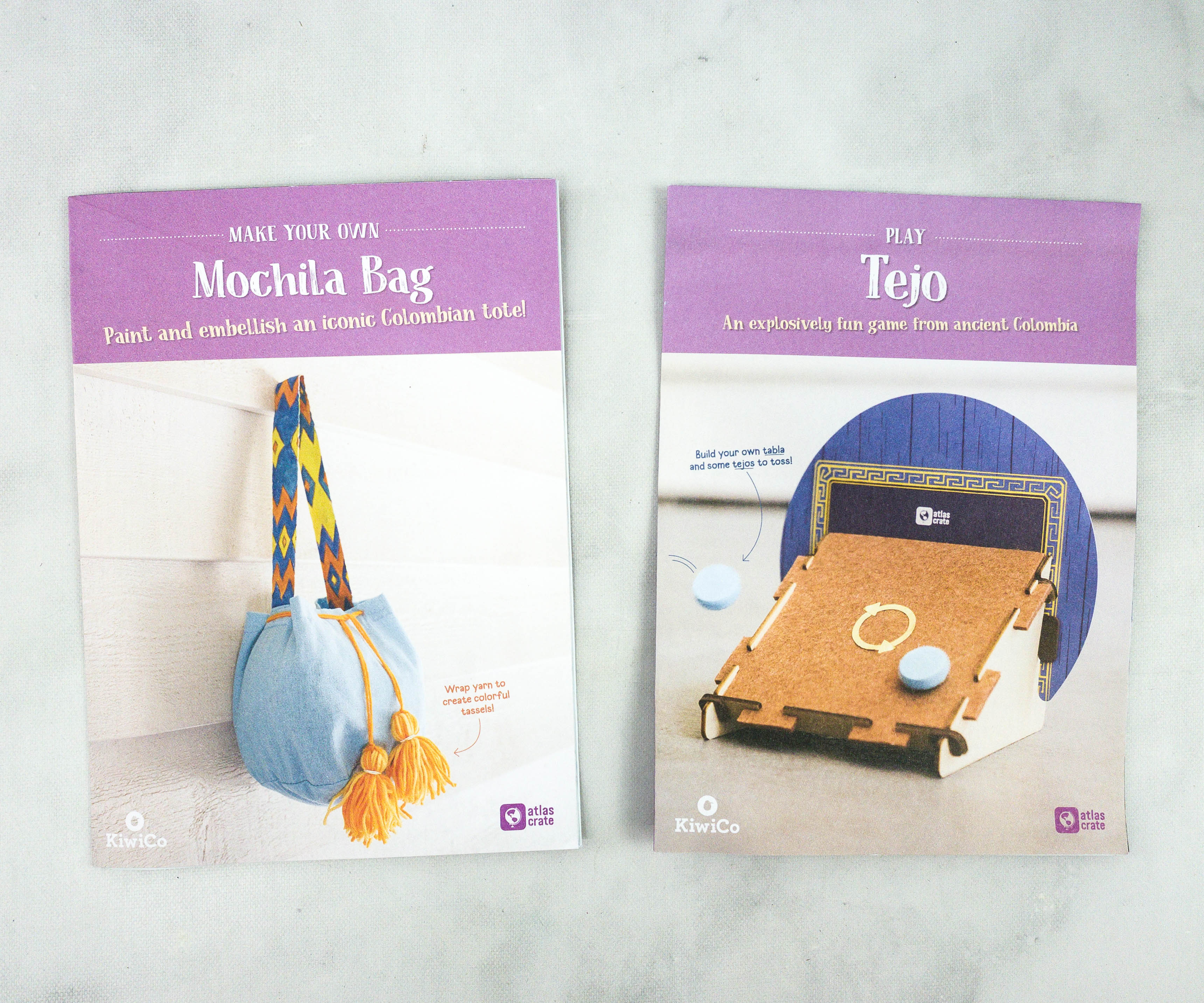
For this month’s Atlas Crate projects, my kids made their own Mochila Bag and Tejo!
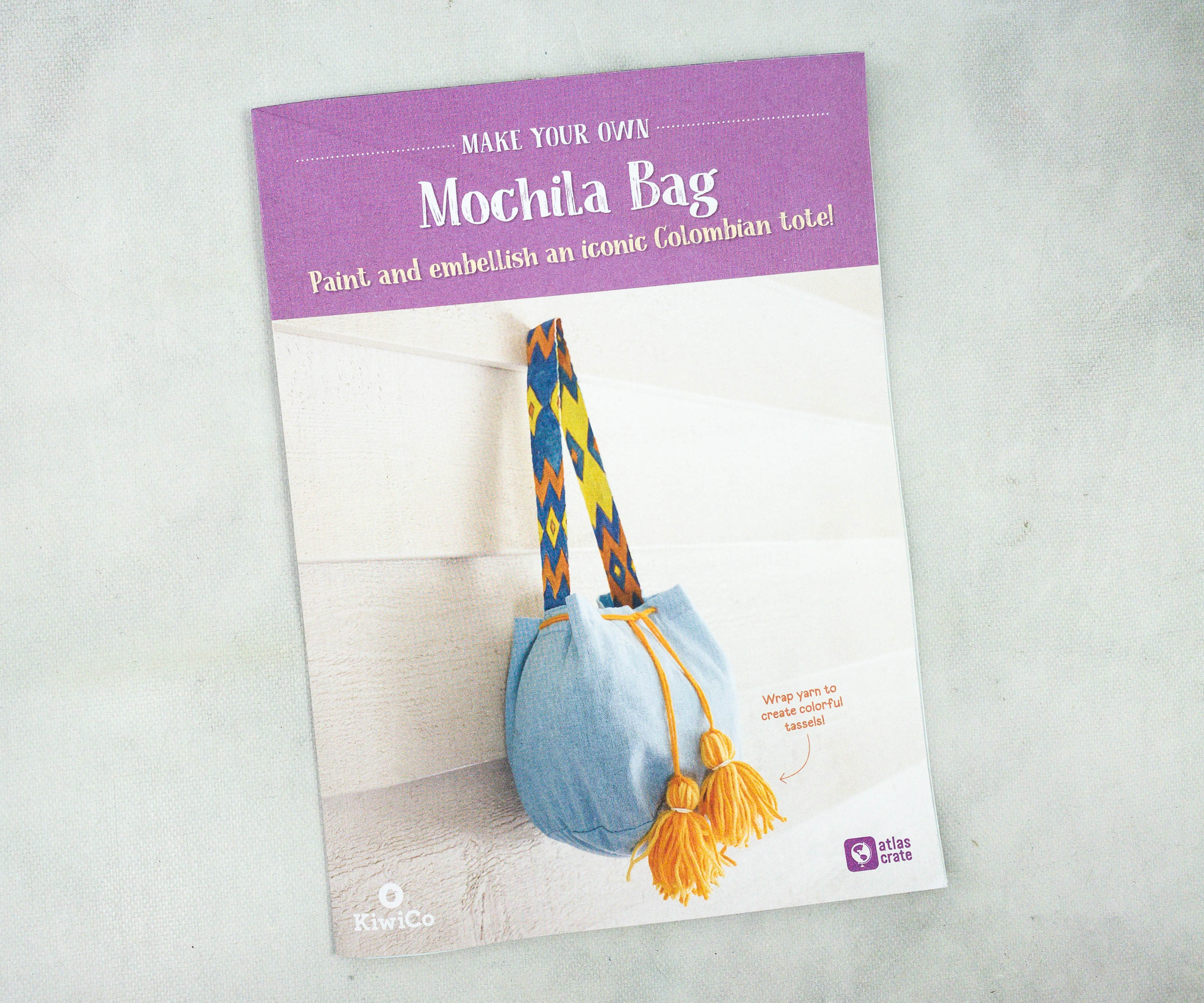
Activity #1: Mochila Bag. The first activity is about making a Colombian traditional bag. It’s originally made by the indigenous people of Wayuu from La Guajira, Colombia.
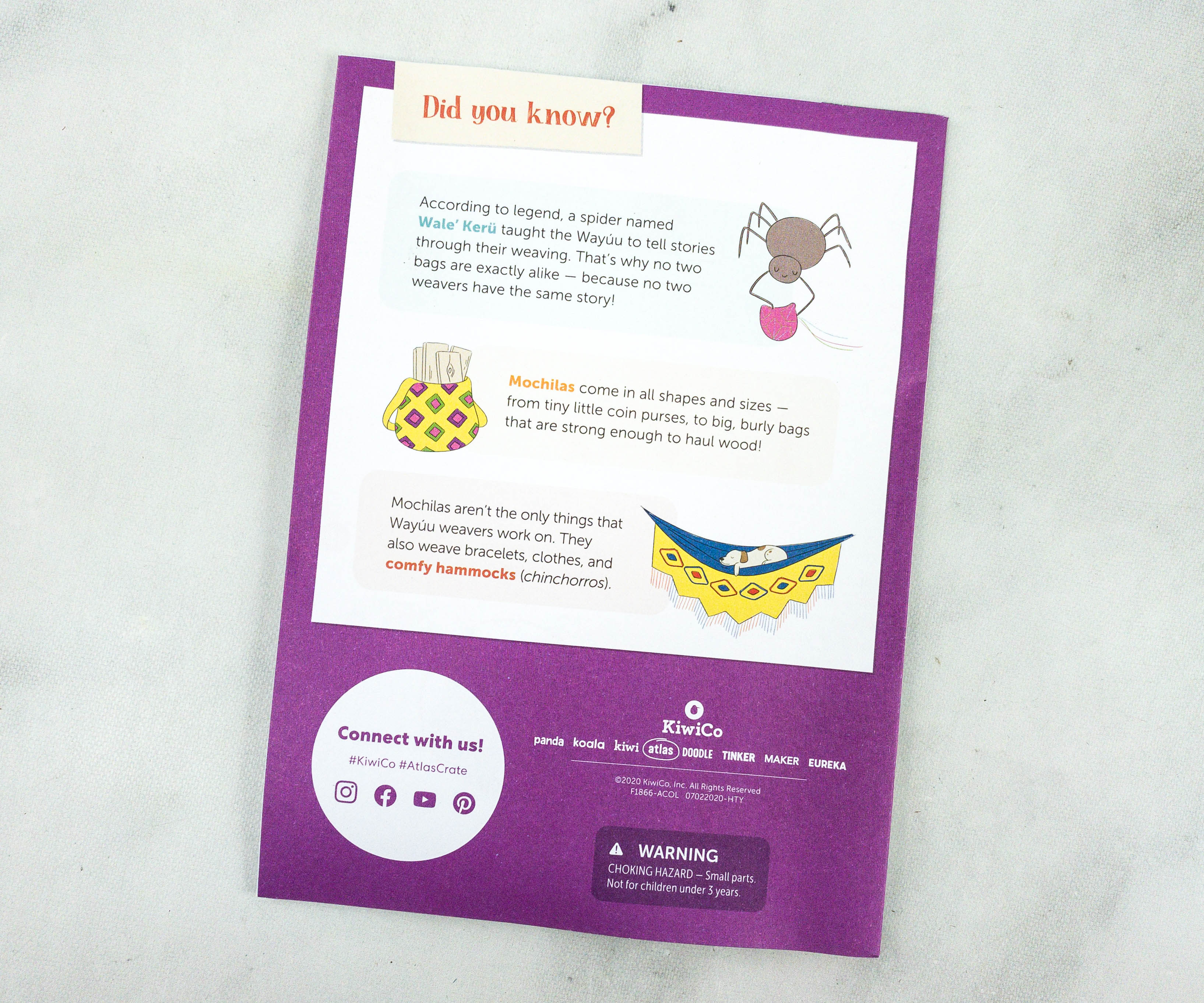
The back of the booklet features some fun facts about the Mochila Bag!
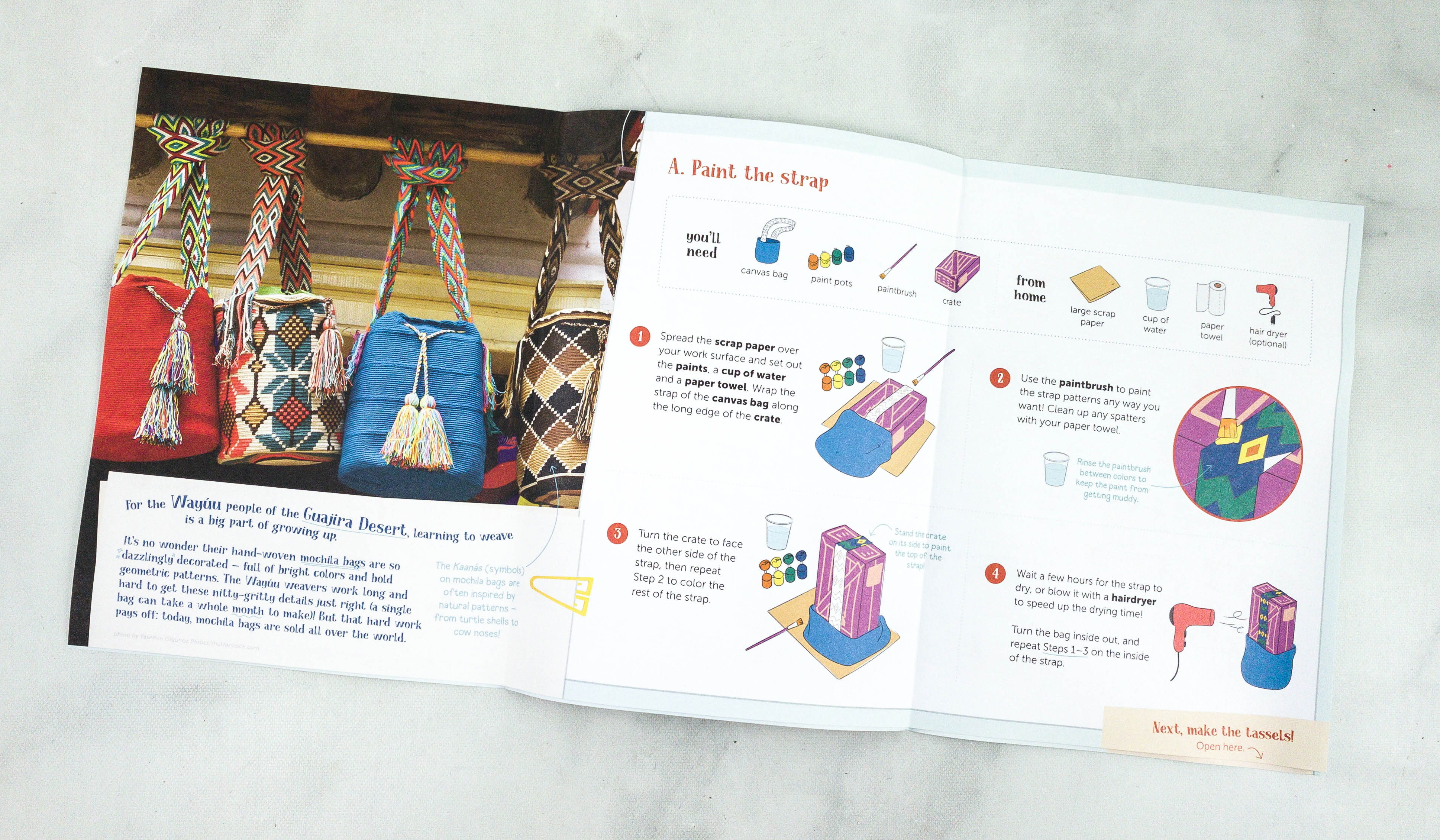
This project is divided into four different parts: painting the strap, making the tassels, threading the drawstrings, and finishing the bag.
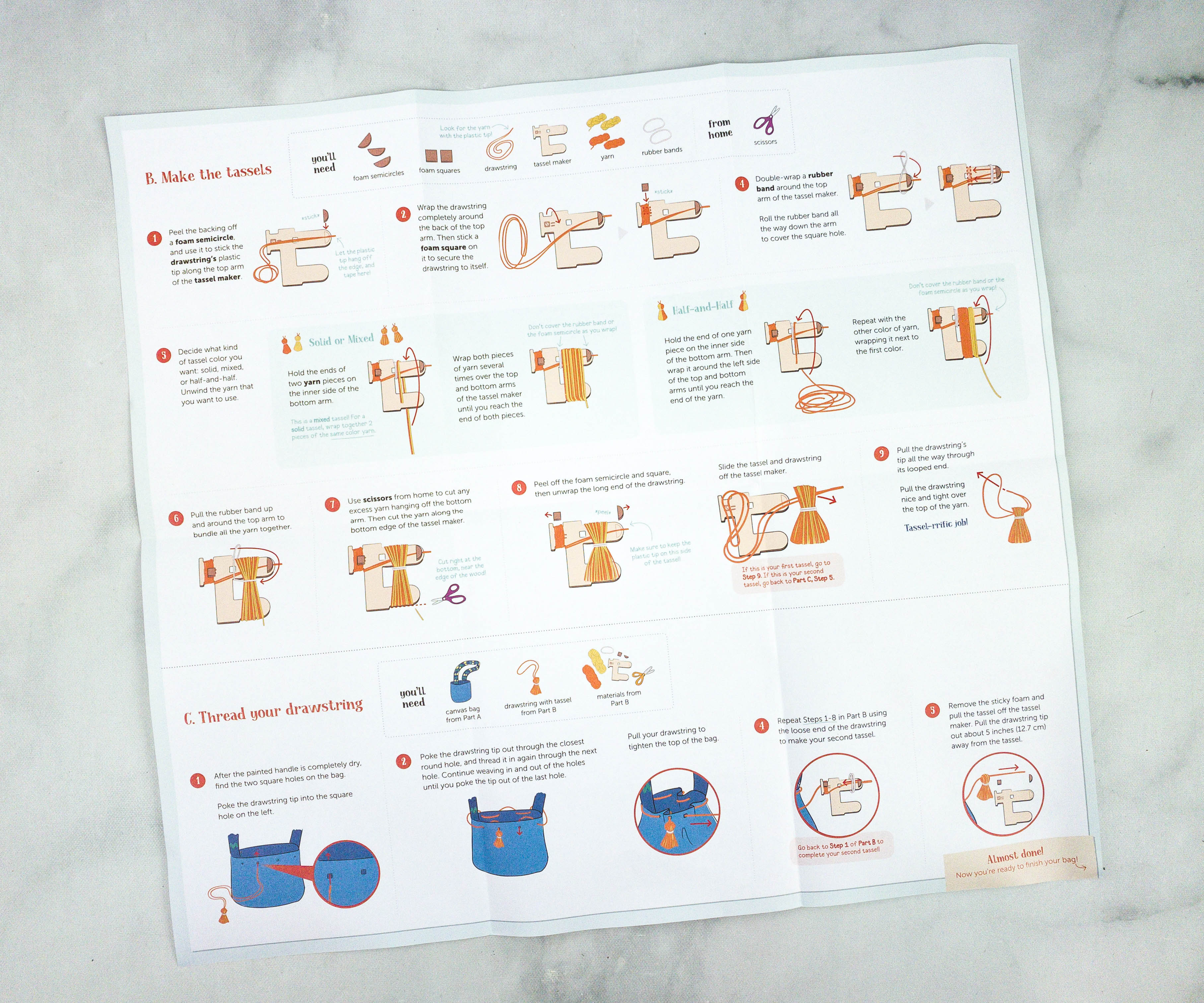
The instruction sheet is well-detailed and kid-friendly!
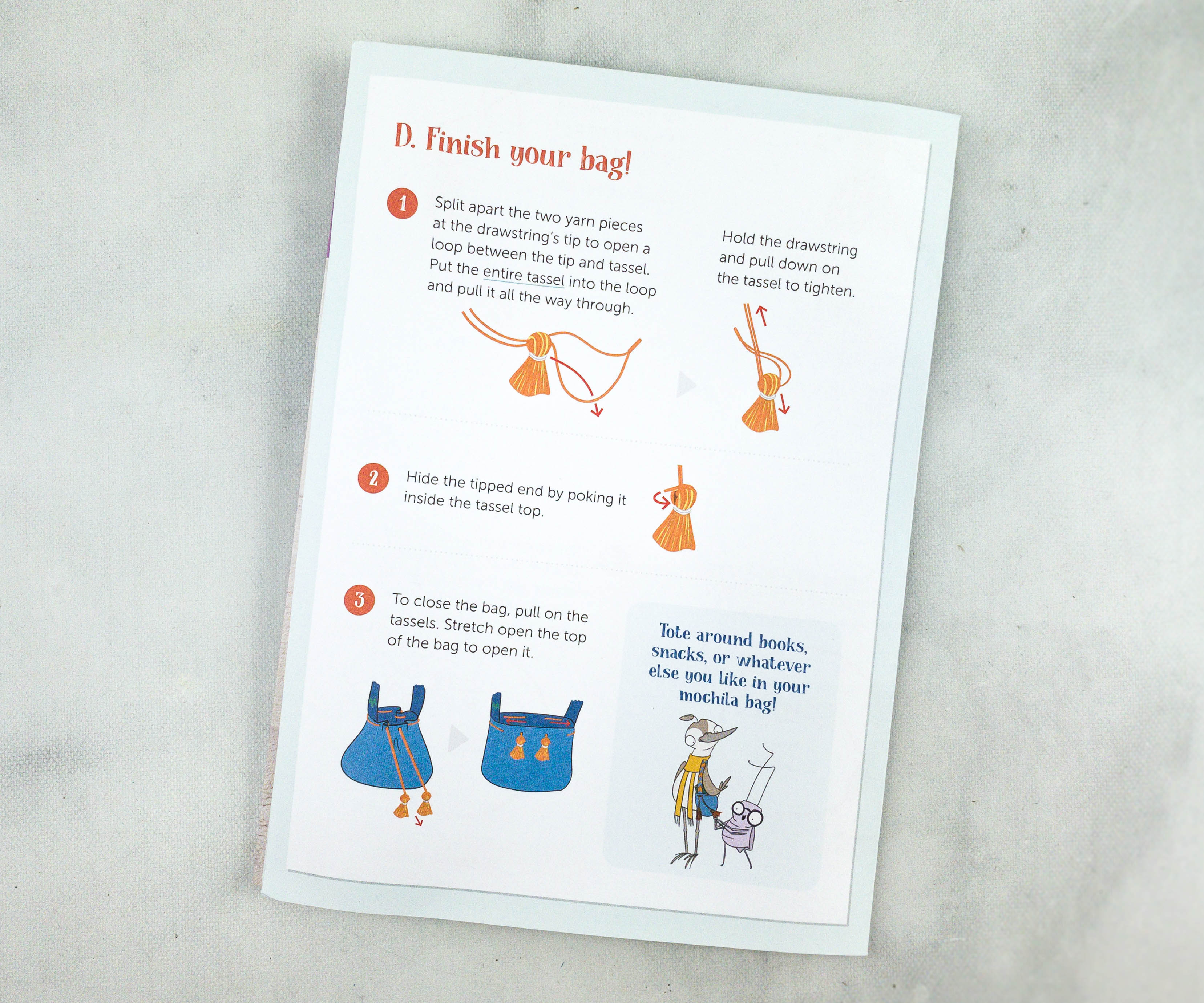
It even includes illustrations that kids can easily follow.
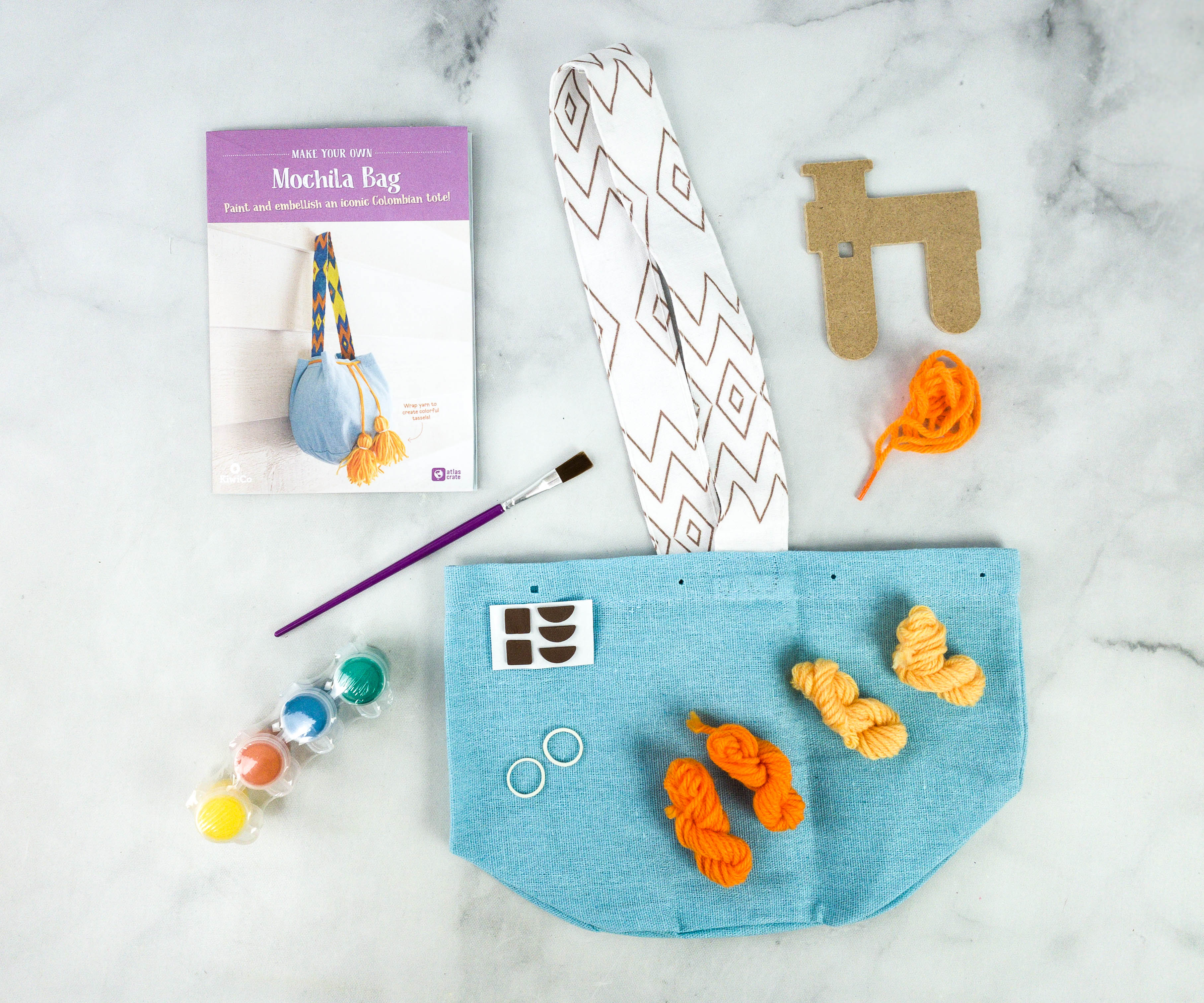
For this project, the crate provided the canvas bag, paint pots, paintbrush, drawstrings, tassel maker, yarn, and rubber bands.
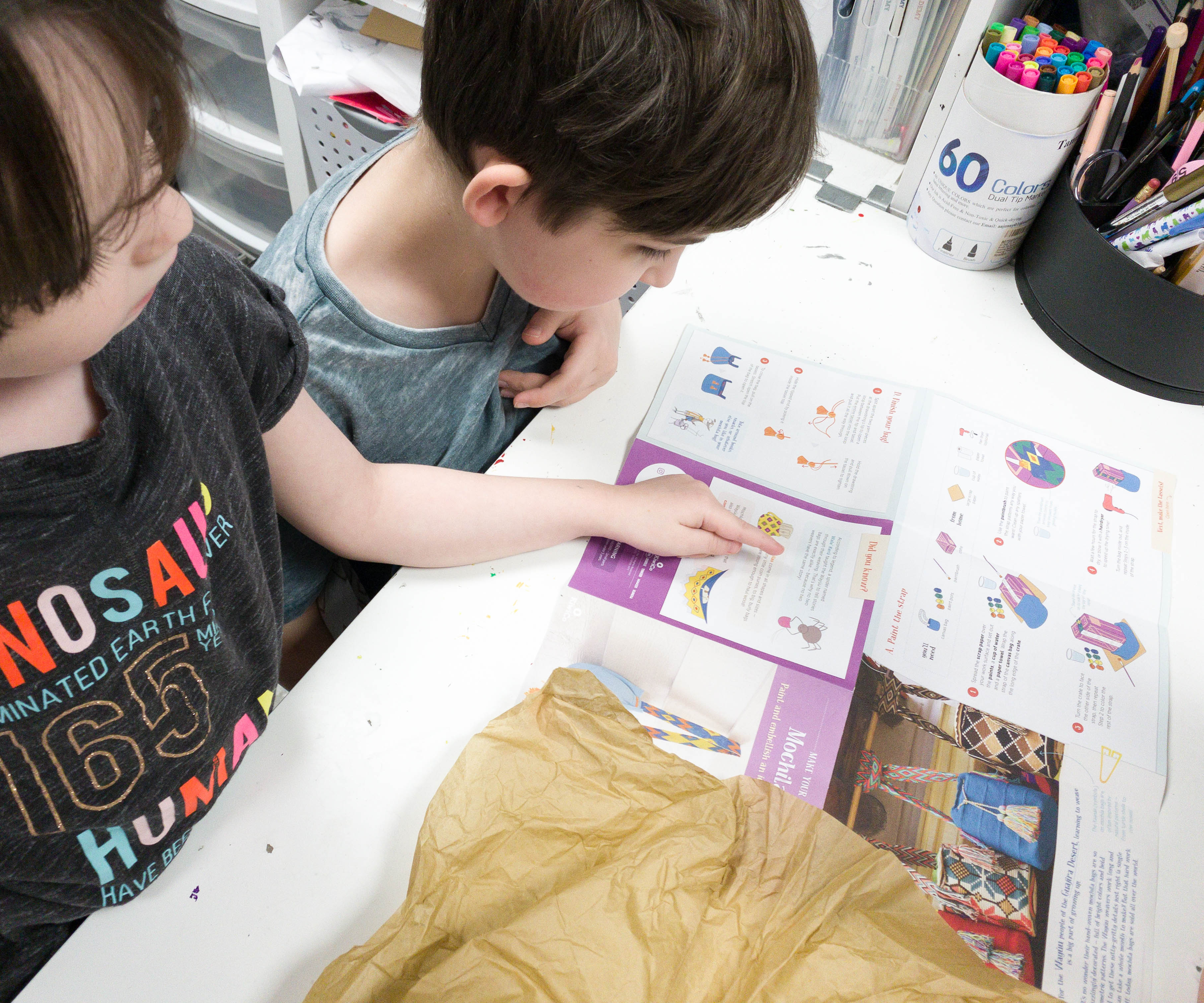
My kids started by reading the instruction booklet carefully. It’s really a great practice to know every detail of the project to minimize, if not fully avoid, some setbacks.
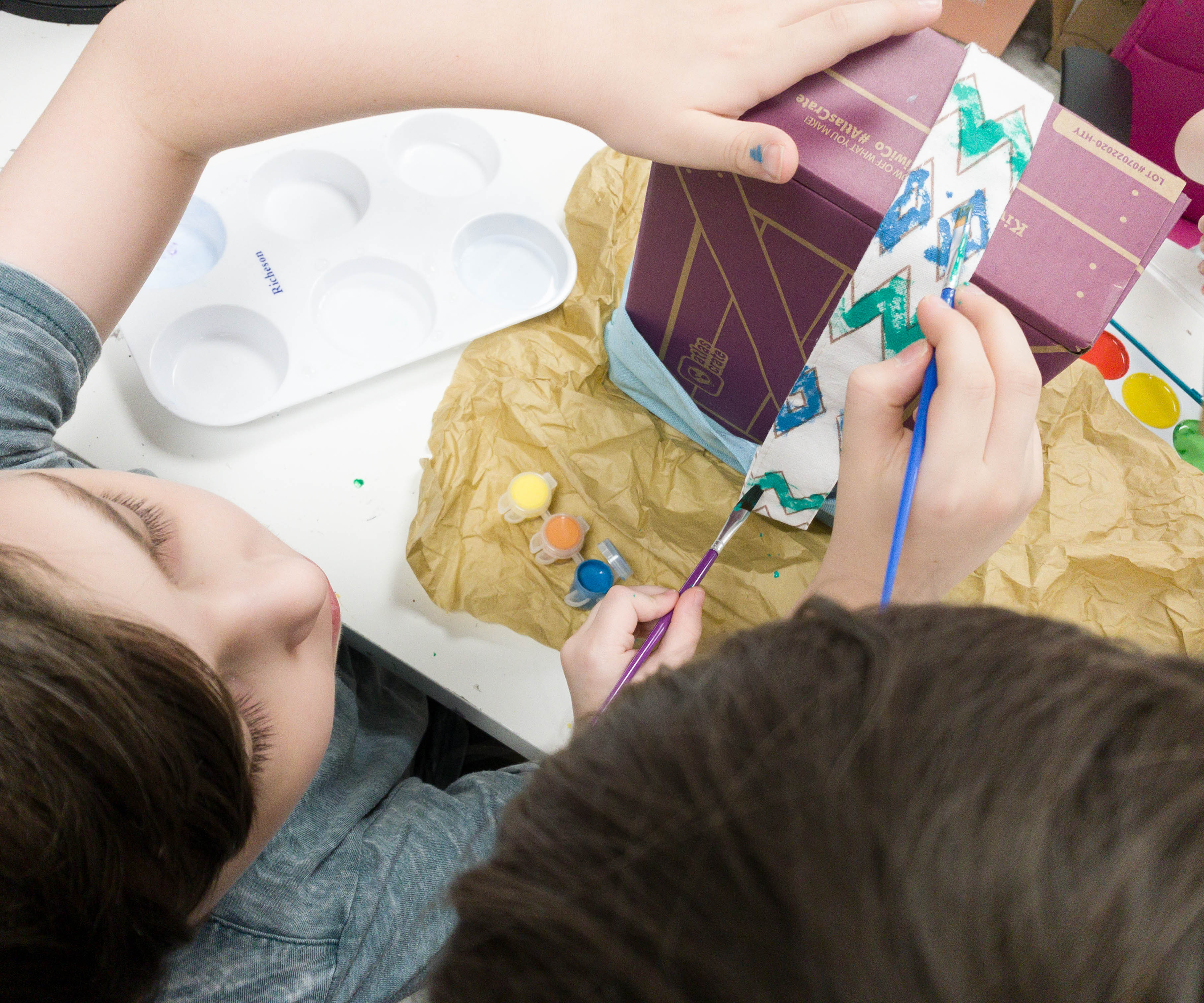
Using the crate box as a stand, they wrapped the strap of the canvas bag on the box and painted the patterns.

They let the paint dry for a few minutes and then began on the other part of the straps. They repeated the procedure until the strap is fully covered with paint.

The next part of the project is making the tassel. My kids stuck one end of the yarn using the foam square on one of the arms, and they also wrapped the yarns several times over the top and bottom arms of the tassel maker until they reached the end. Afterward, they pulled the rubber band up and around the top arm to bundle the yarn together.
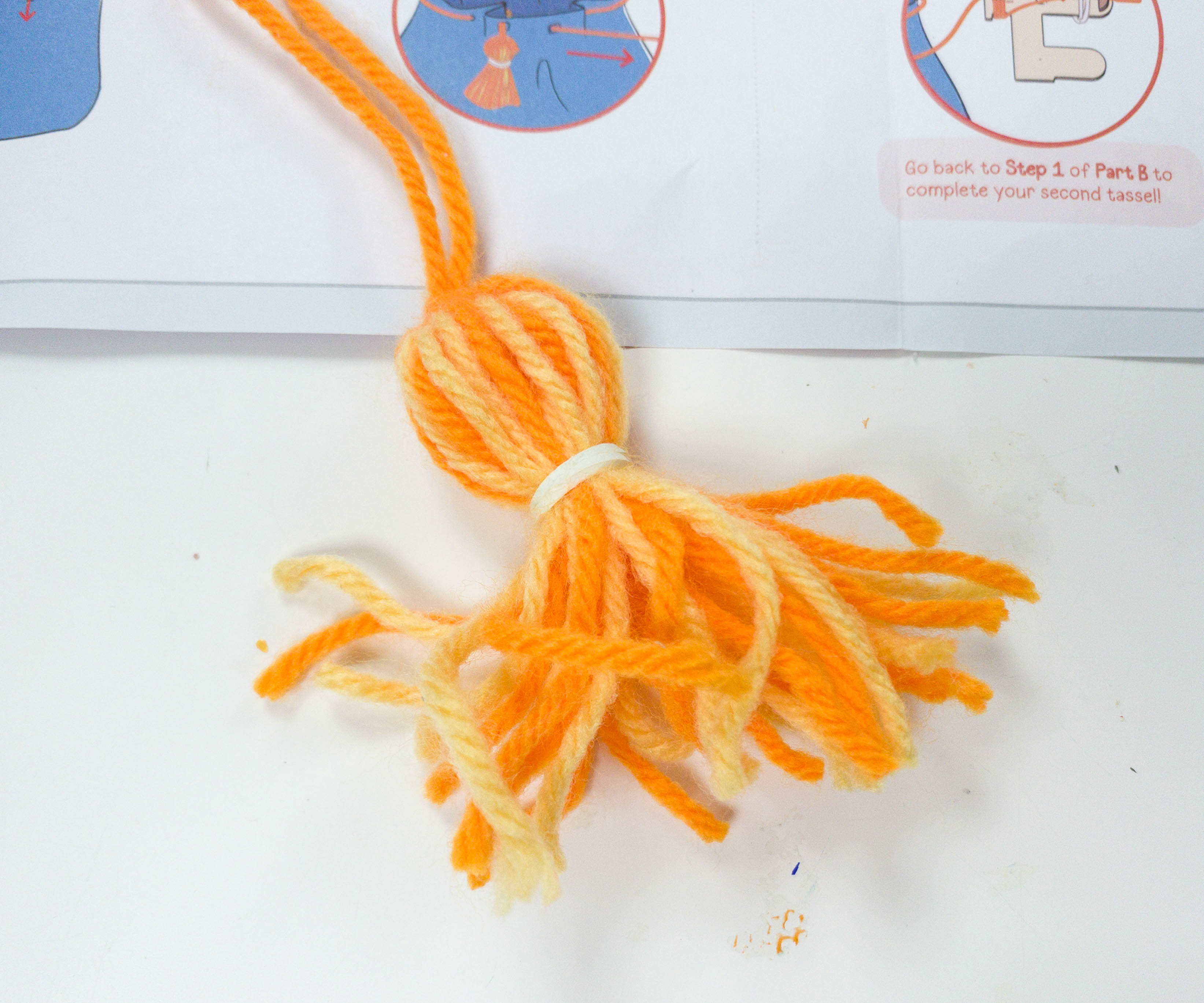
Using the scissors, it’s now time to cut the yarns along the bottom edge of the tassel maker. Then, peel off the sticker and unwrap the long end of the drawstring, slide the tassel and drawstring off the tassel maker.
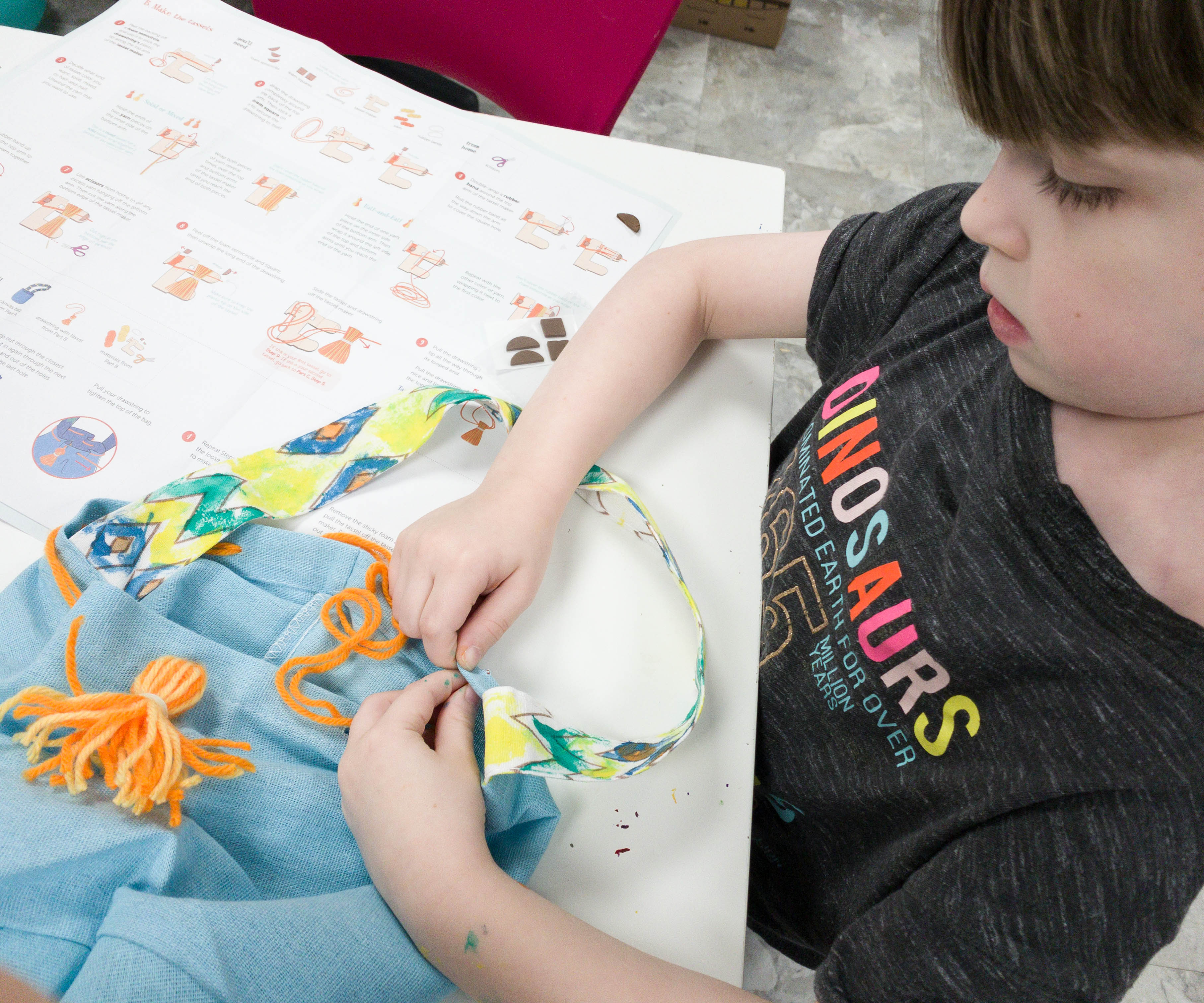
To thread the drawstring on the bag, all the kids needed to do is to poke the drawstring tip into the square hole and thread it in again through the next hole. Then, they continued weaving in and out of the holes until they poked the tip out of the last hole!
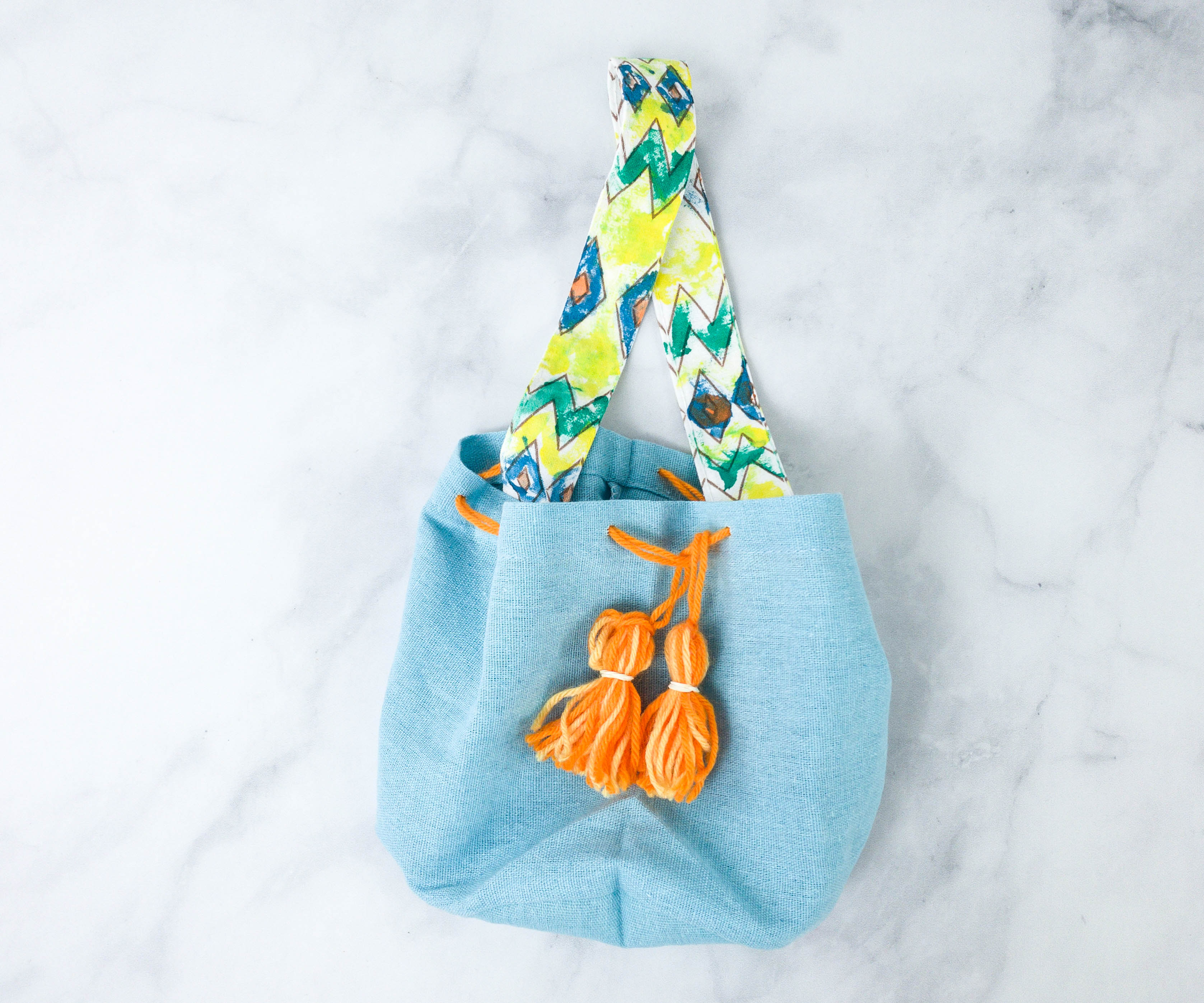
Just pull the drawstring to tighten the top of the bag and you can also loosen it by simply pulling the bag’s mouth!
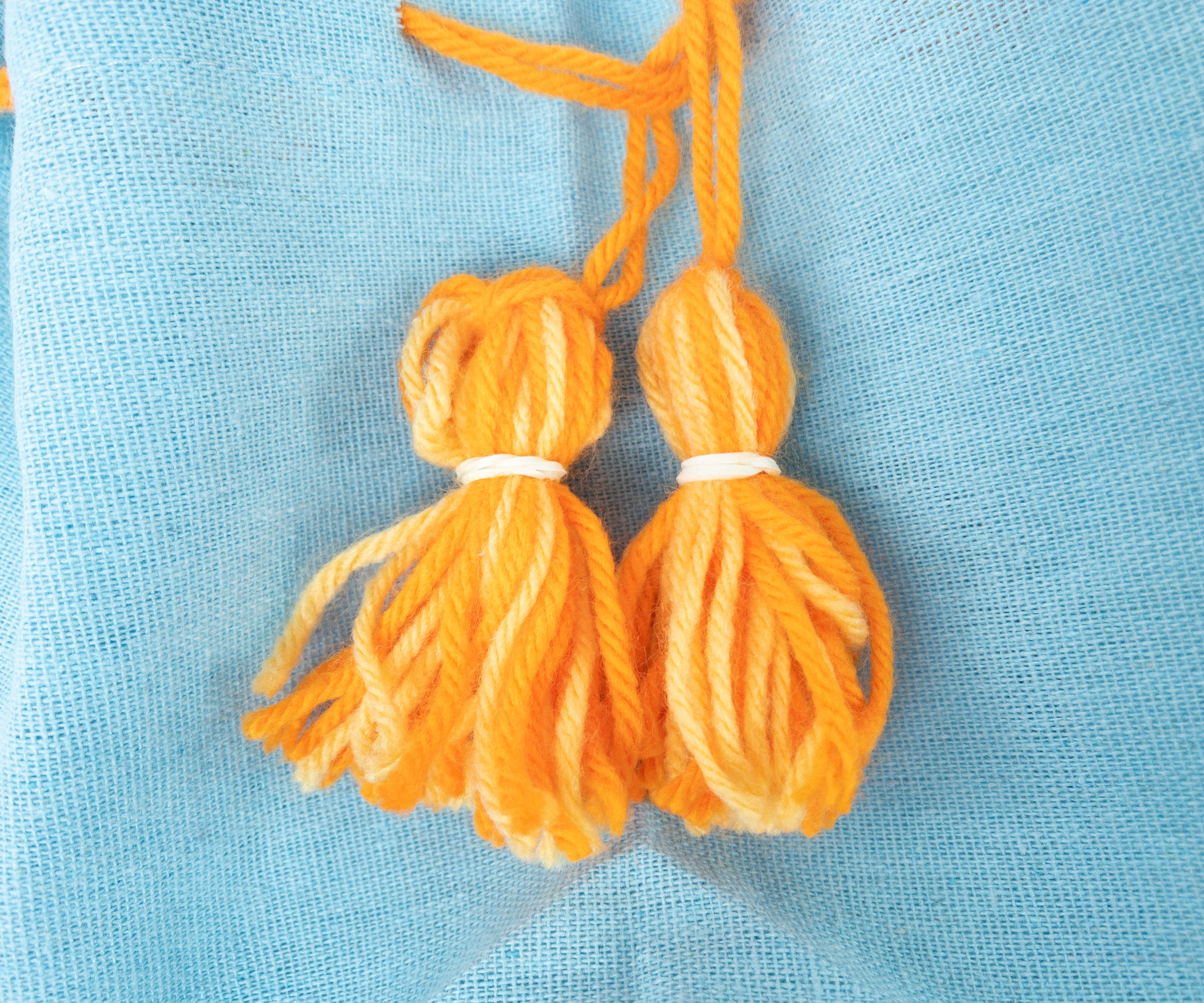
Once the bag is tightened, you can finally loop it over to lock.
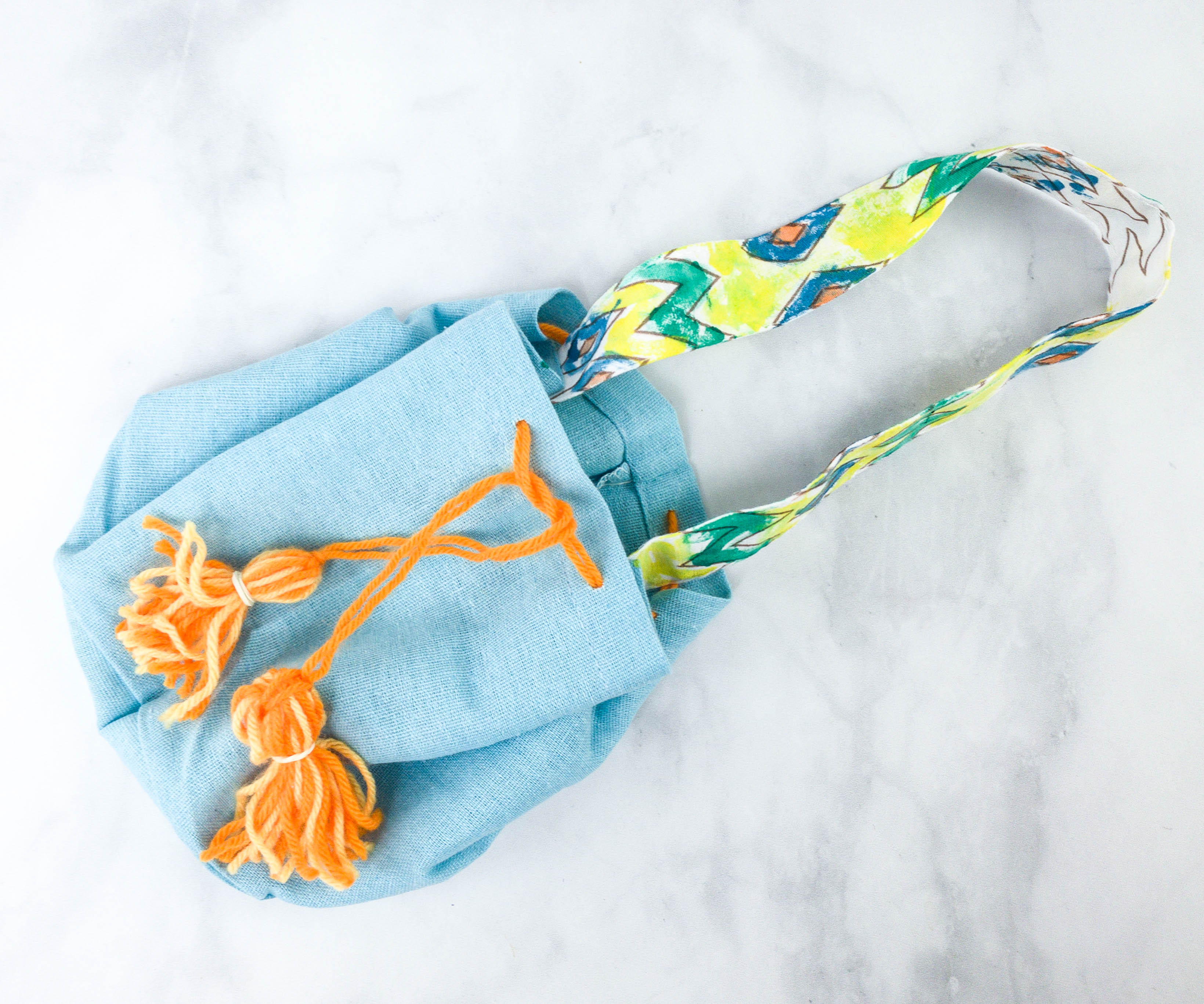
Here’s a look at the finished Mochila Bag!
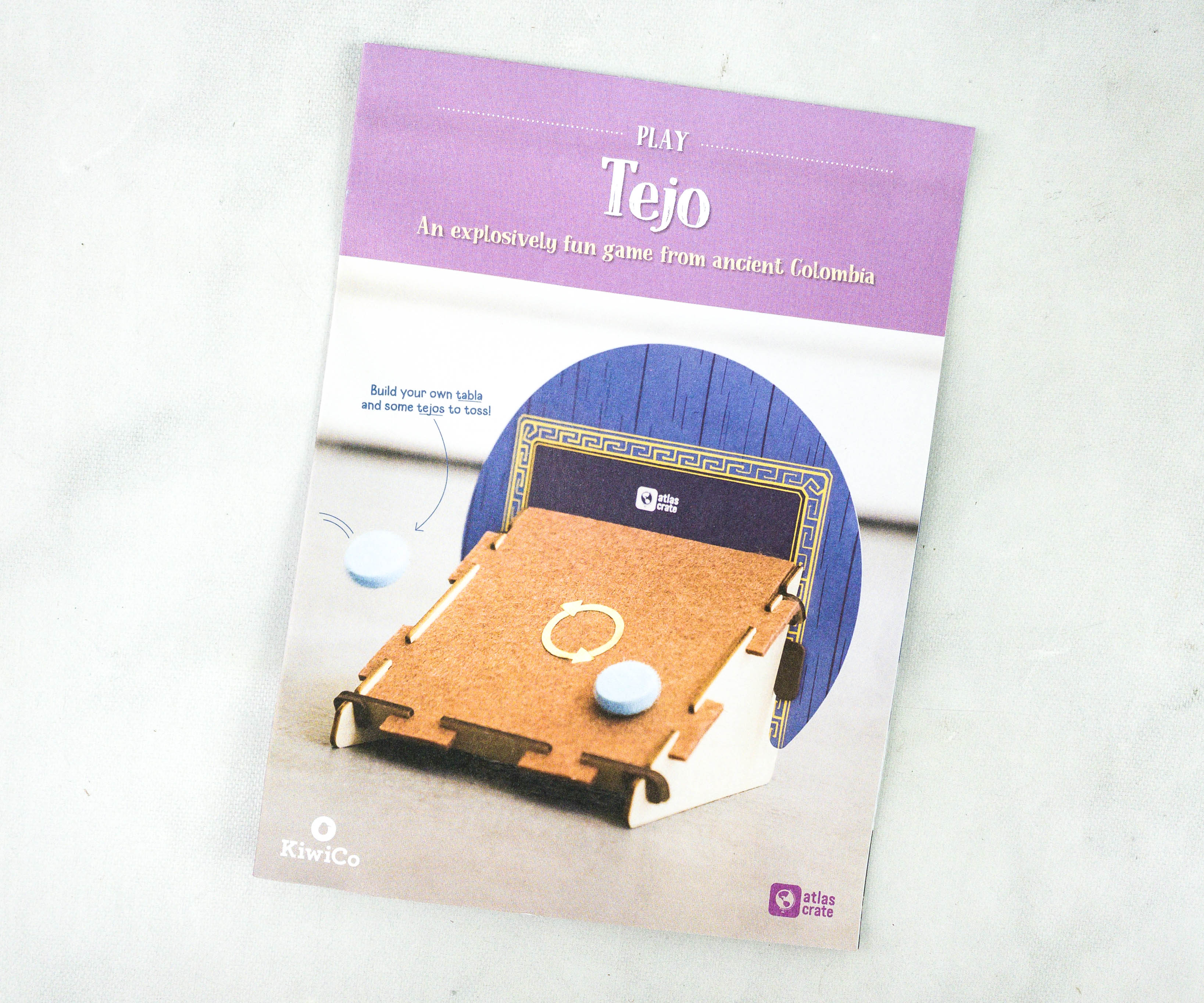
Activity #2: Tejo. For the second project, my kids built a cancha, a box that is used to play Tejo. This box features a bocin or metal ring in the middle where you can shoot the disco or the metal disc.

According to the back of the booklet, the early version of the game used a solid gold disks, and each one weighs as much as a brick. It’s also a good thing to not wear fancy clothes while playing this game, as you might get dirty especially when raining!

Colombia’s national sport, tejo (TEY-ho) is a real live blast! Players hurl metal disks (called tejos) at a box of clay (called a tabla) to score points. And if they aim just right? They might hit a mecha, a paper triangle packed with gunpowder, and-ka-BOOM! This explosive game is played across the country in all kinds of settings – from casual games between friends to highly competitive tournaments where players can win prizes!
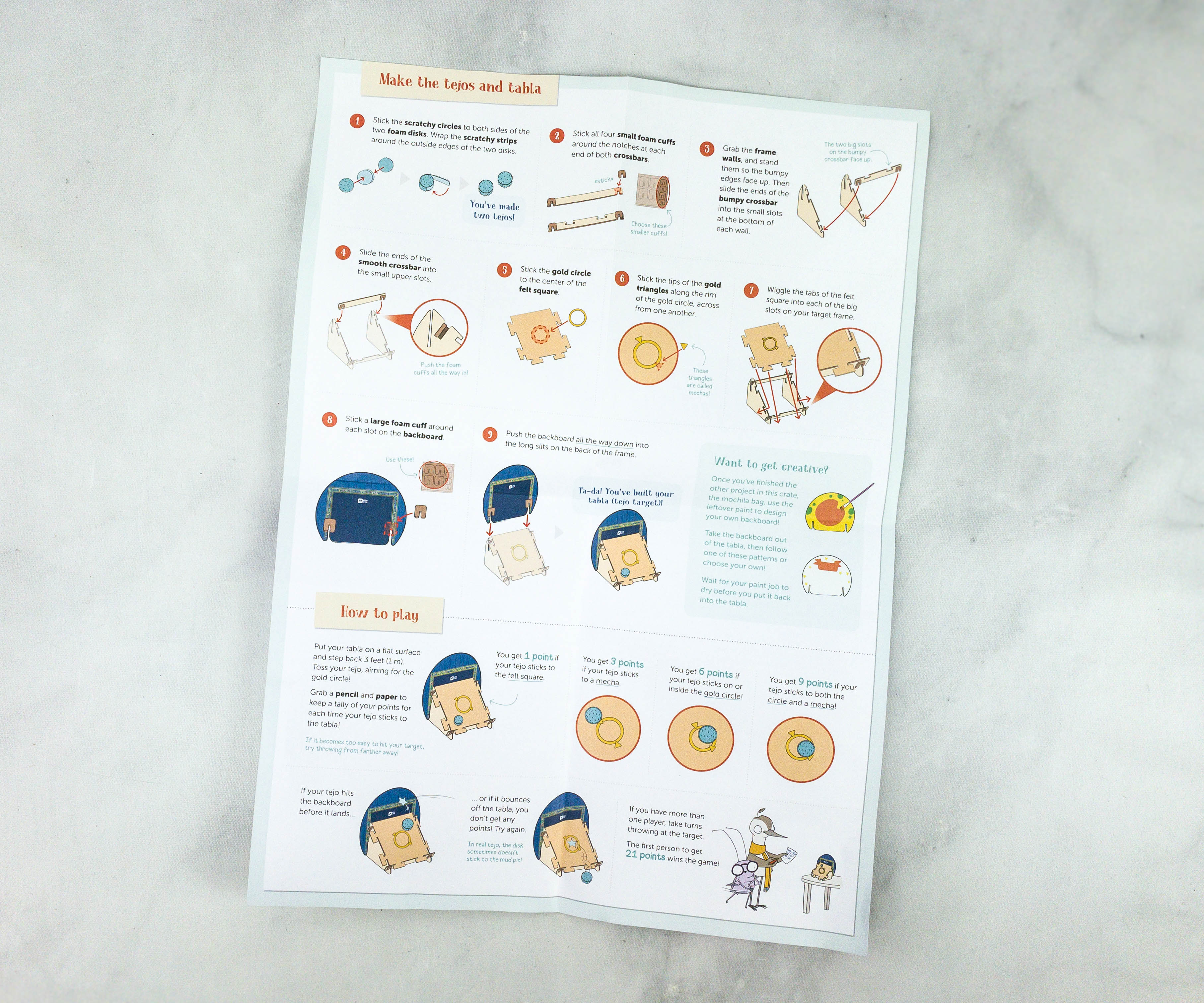
Like the first project, this one also comes with an information sheet that contains a detailed step-by-step instructions.
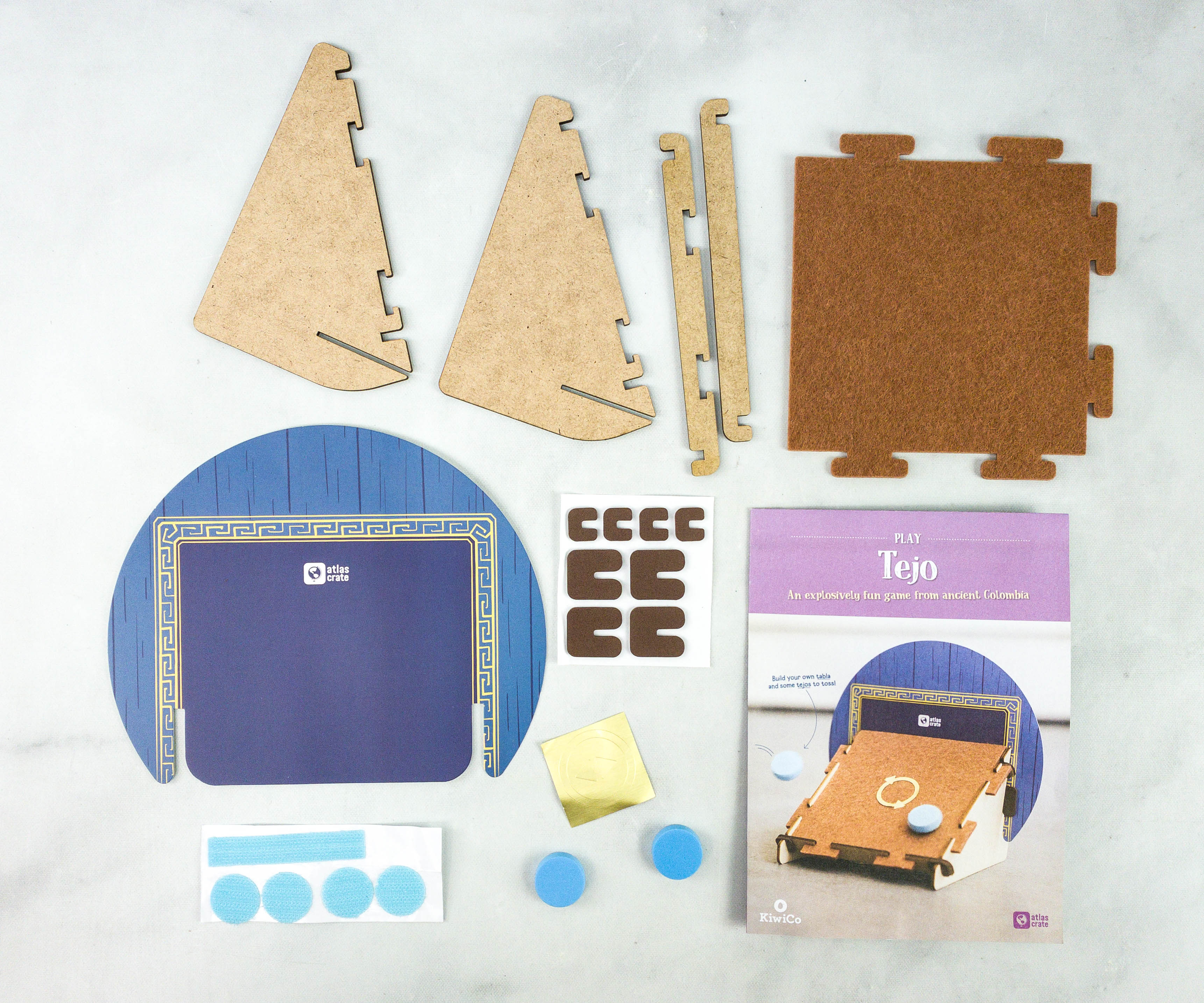
For this project, my kids used bumpy and smooth crossbars, frame walls, backboard, gold triangles, gold circle, foam disks, scratchy circles, scratchy strips, felt square, large foam cuffs, and small foam cuffs.
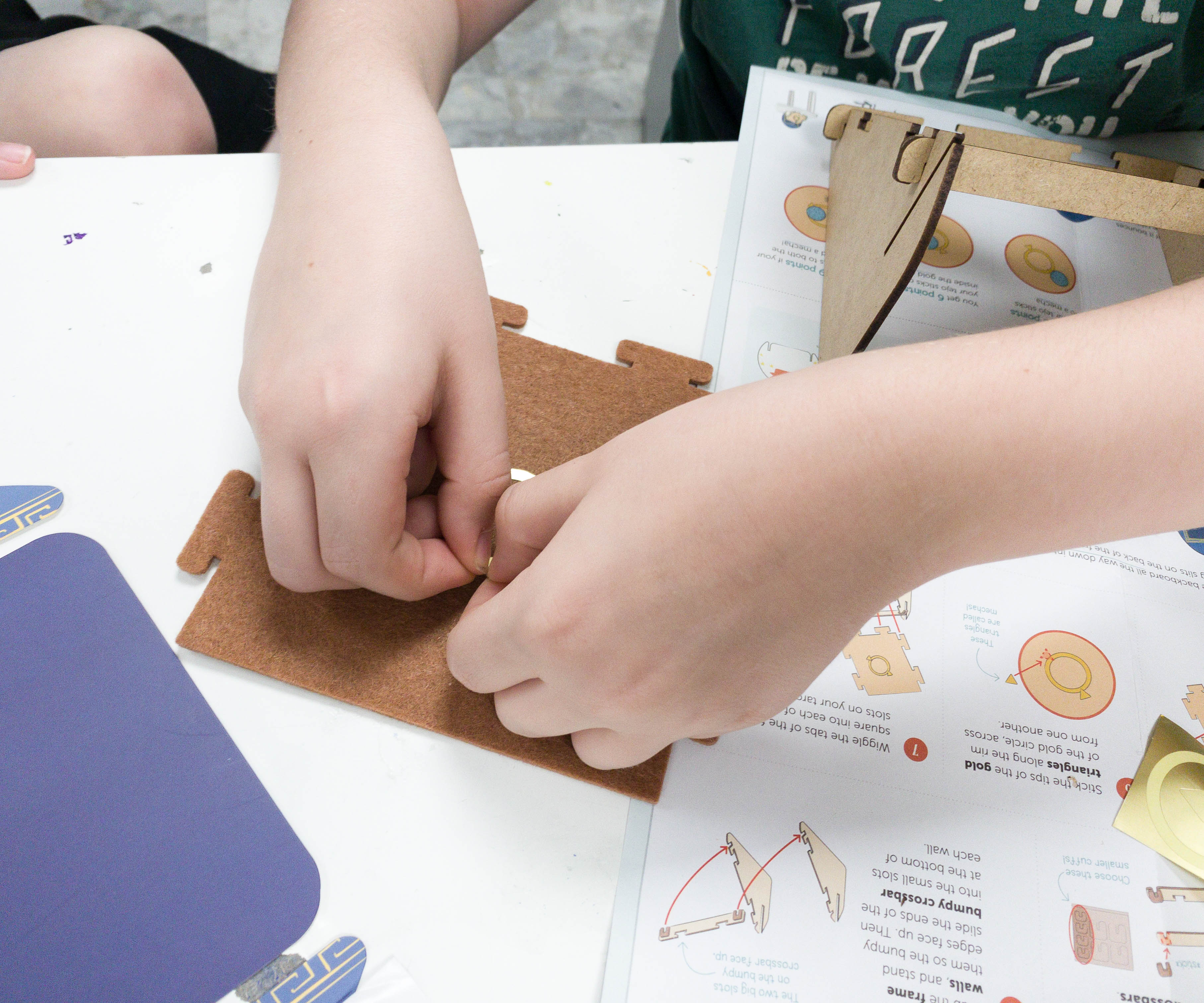
My son started by sticking the gold circle at the center of the felt square and sticking the tips of the gold triangles along the rim of the gold circle.
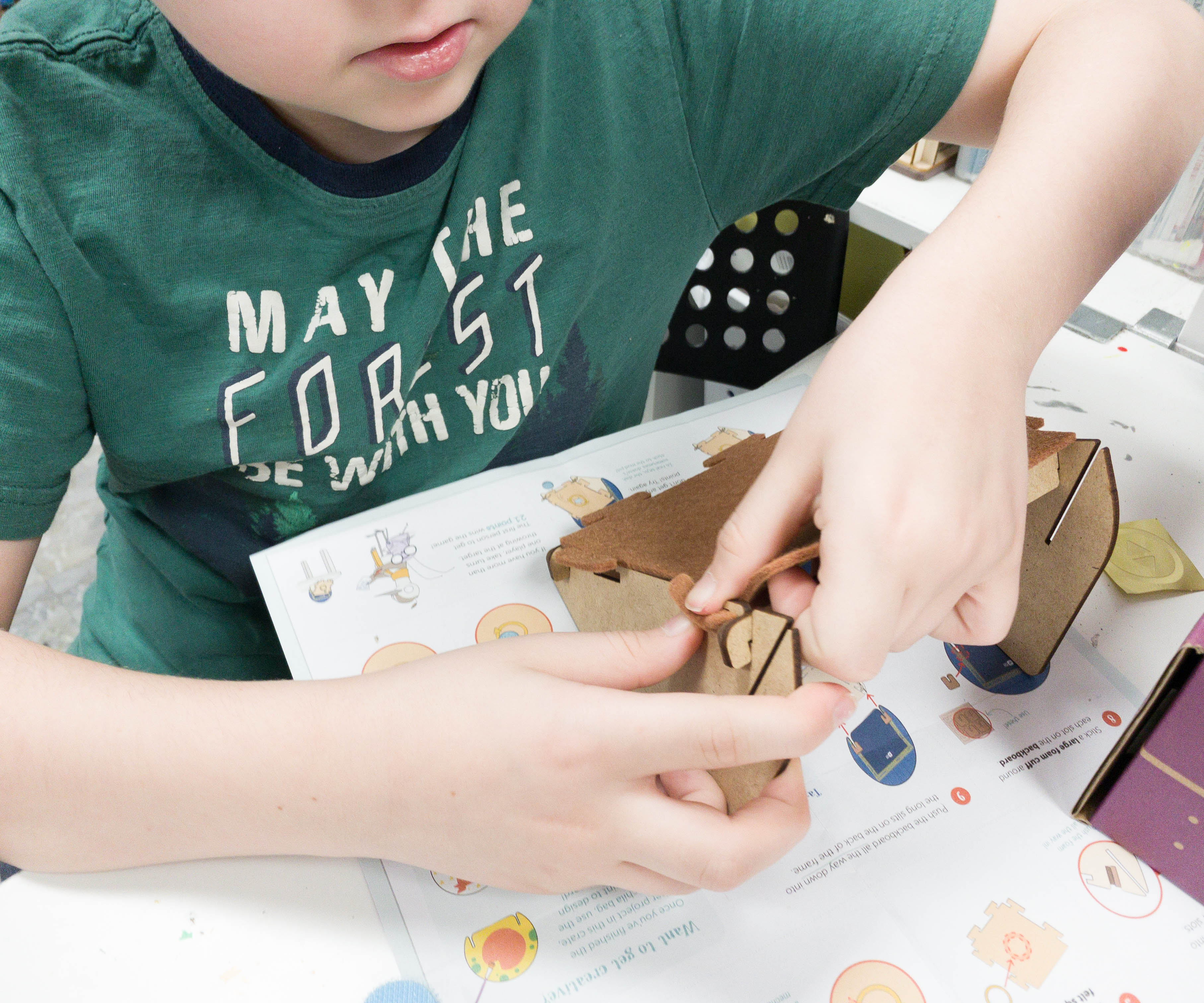
He also connected the tabs of the felt square into each of the big slots on the target frame.
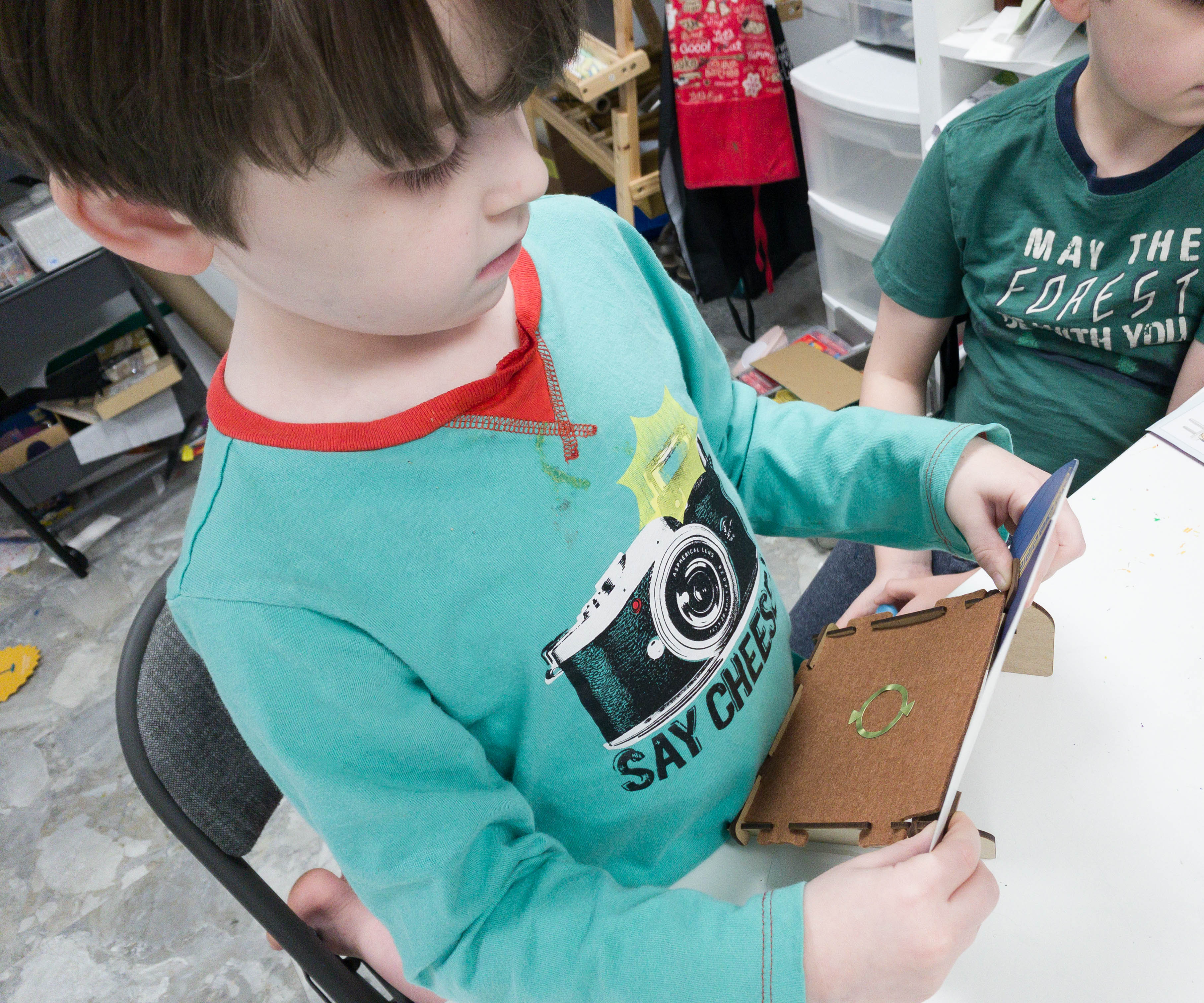
The next step is to stick a large foam cuff around each slot on the backboard and then push the it all the way to the long slits on the back of the frame.

To make the discs, just stick the scratchy circles on both sides of the two foam disks and then wrap the scratchy strips around its edges. It’s fast and simple!

To play, simply put the tabla on a flat surface, and from their, take three steps backward or at least 1 meter from the tabla, and toss the disks on the tabla.
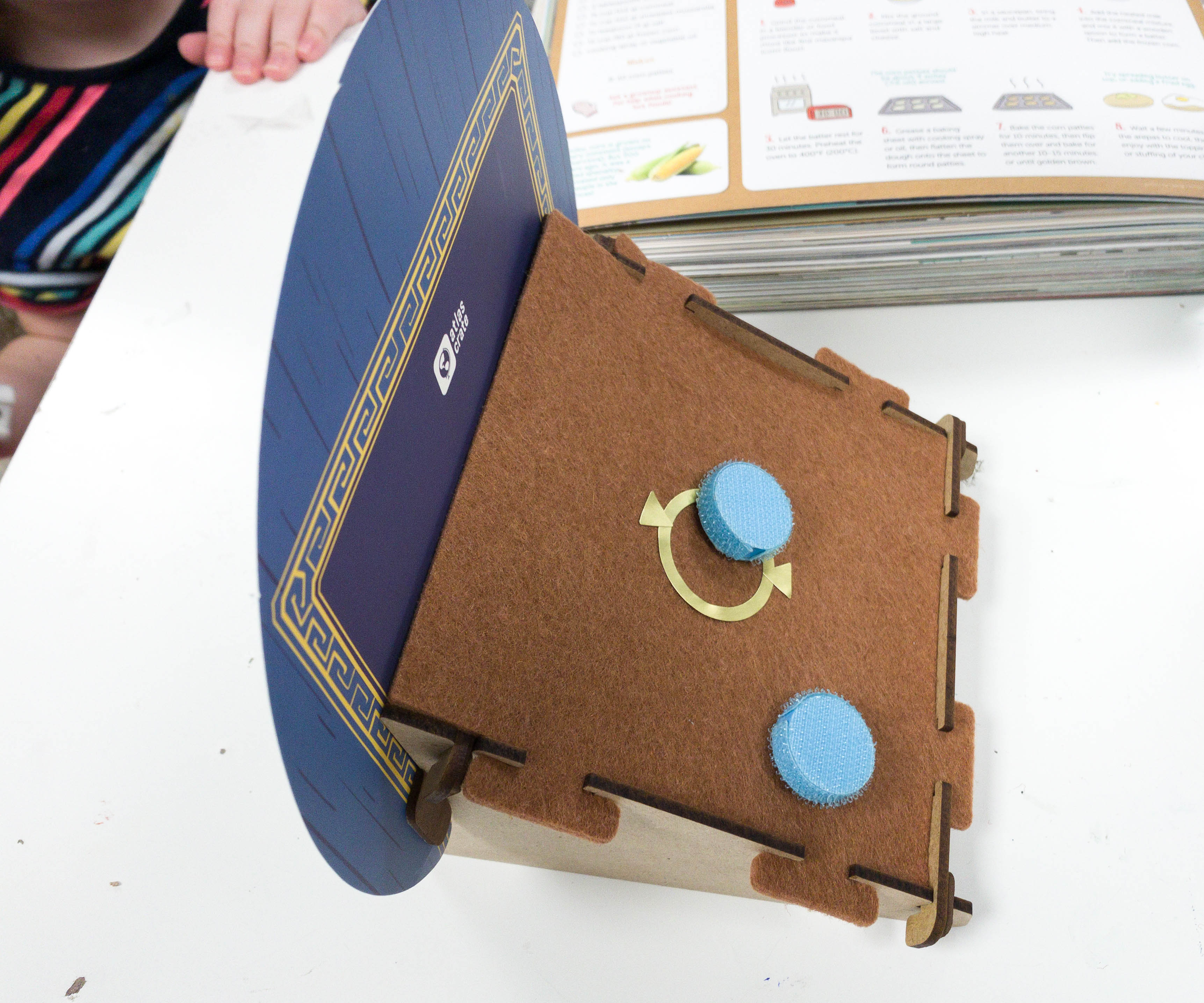
The winner of the game is the one who can shoot the discs in the center of the gold ring!

This miniature Tejo is definitely a great game to be played with friends and family!
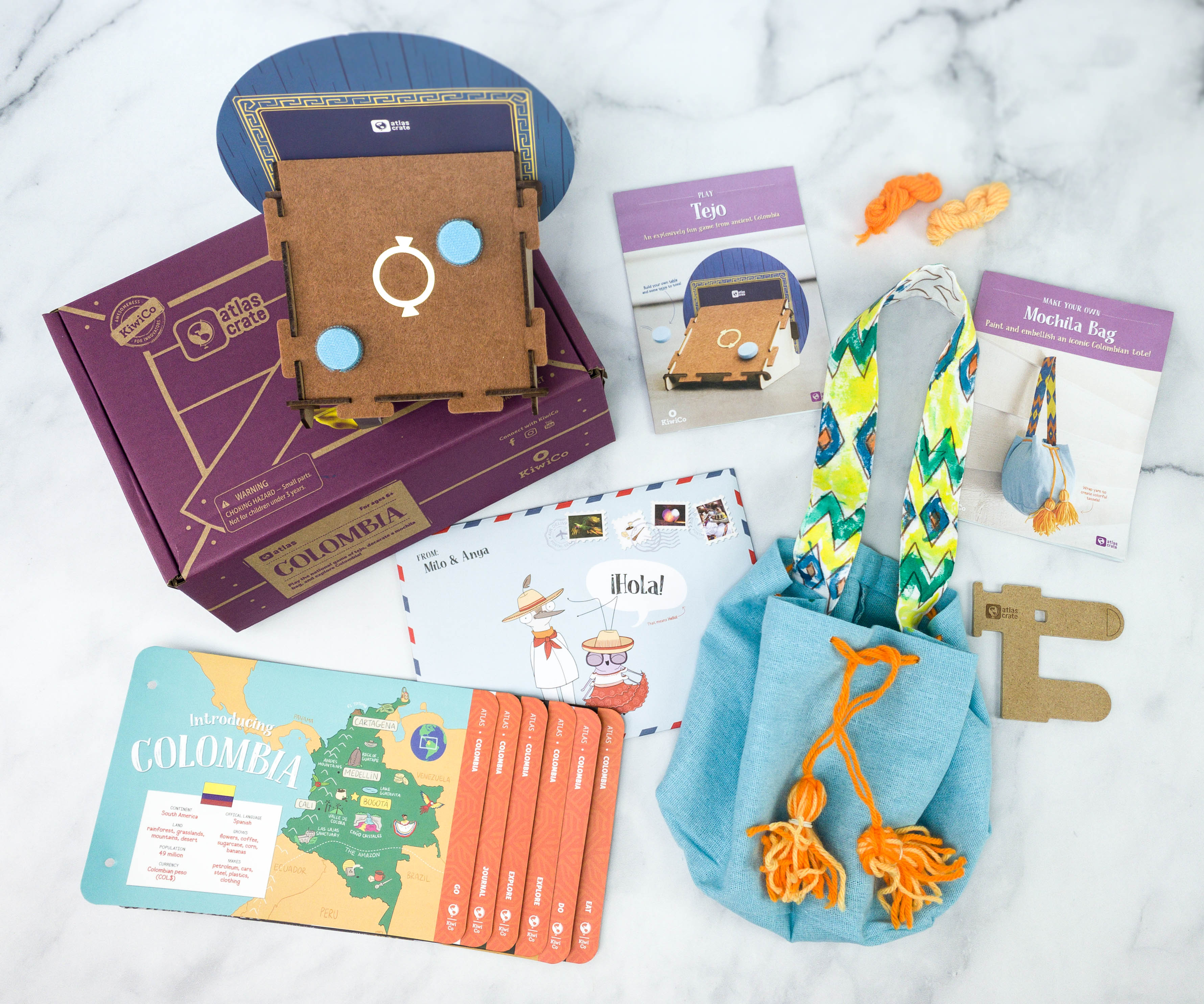
Here are all the projects my kids made this month!
Columbia is truly an interesting country! They have rich history and traditions, beautiful places, and fun events! This crate includes exciting projects related to Colombia and they even provided a recipe for Colombia’s most popular snack, Arepas! My kids had a great time learning about the country, and they were happy about how their Mochila bag and Tejo game turned out. They also enjoyed making the Arepas and snacking on them after, too.This is such an interactive box and it always makes learning about geography fun. The activities also made a great bonding experience for my kids, so it’s really worth it.
What do you think of KiwiCo’s Atlas Crate?




Comments